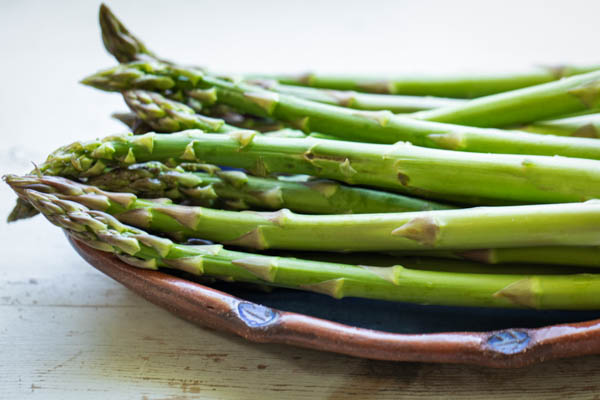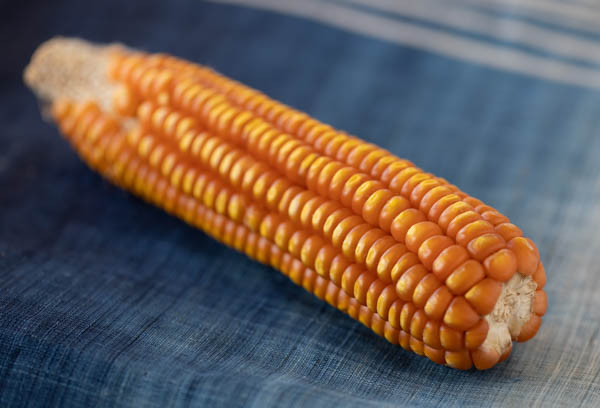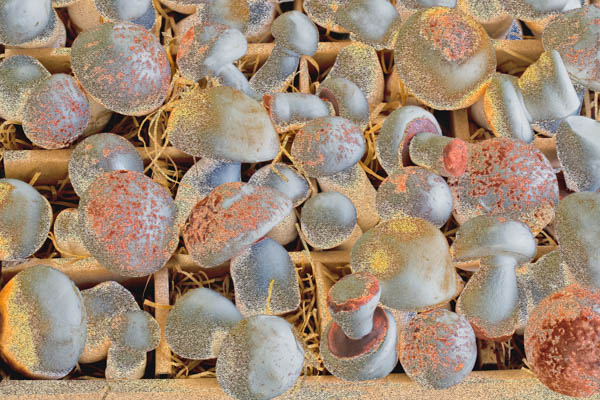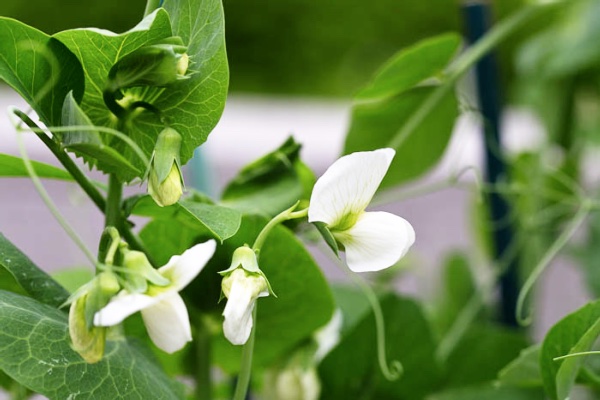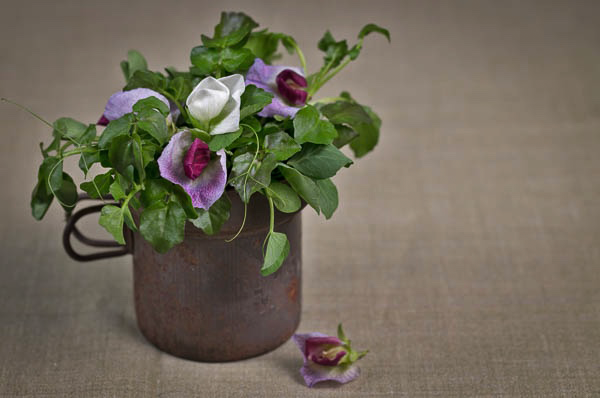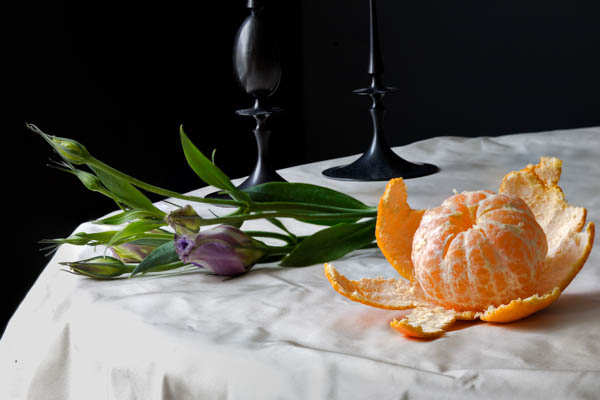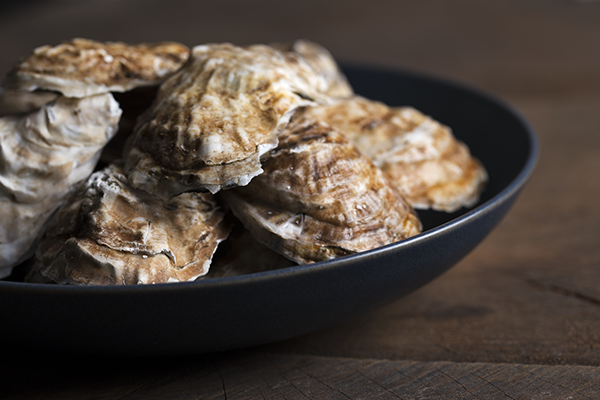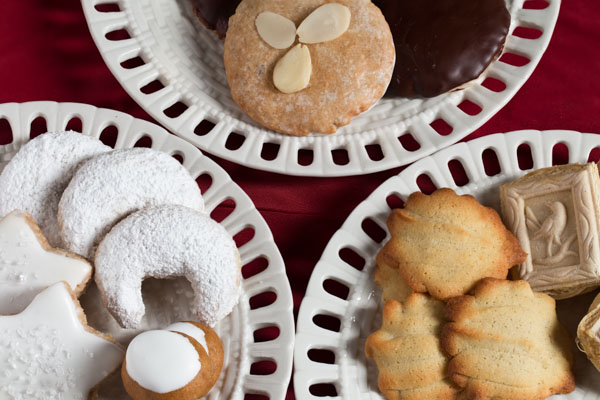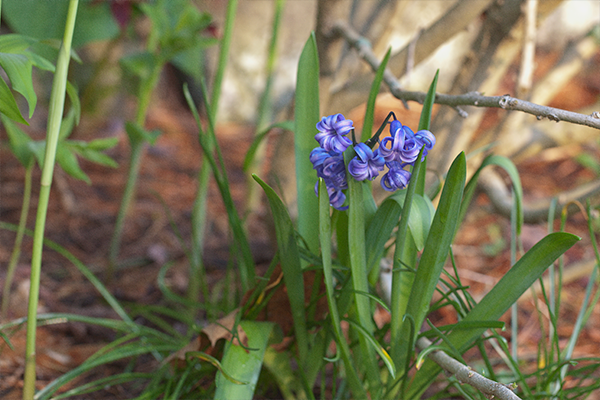Ladies and Gentlemen, the Buffet is Open!
Summer 2021
Leap of Faith
Spring 2021
Christmas Recipes
Winter 2020
Thanksgiving
Autumn 2020
Late Summer Recipes
Summer 2020
Cautiously toward Summer . . .
June 2020
Five Cakes–and a New Mill
May 2020
Spring Recipe Ideas
Late April 2020
Stay-at-Home Recipes
April 2020
New Recipes – Holiday Edition
Holiday 2019
New Recipes – Late Late Late Summer Edition
Late Late Late Summer 2019
New Recipes – Surf and Sandwich Edition
August 2019
New Summer Recipes
Summer 2019
Late Winter Recipes
Winter 2019
Winter Recipes from Anson Mills Kitchen
Winter 2018
Summer Recipes
Summer 2018
New Spring Recipes
Spring 2018
New Winter Recipes at Anson Mills
Winter 2018
New Holiday Recipes
Holiday 2017
New Summer Recipes
Summer 2017
New Recipes and Ingredients
April 2017
More New Recipes
Early 2017
New Recipes
Christmas 2016
New Autumn Recipes
Autumn 2016
Summer
Summer 2016
Spring
Spring 2016
Winter
Winter 2016
Holidays
Holidays 2015
Autumn
October 2015

Fall Behind
Summer stole a month from autumn this year, giving those of us in the Northeast a lyrically warm September. Thirty days. I swam in the ocean three times in its final week, the current bearing me along in a rush of pinpoint effervescence like a fine Champagne.
October swept in with a vengeance, bringing biblical rains and floods to South Carolina. Poised for harvest on a plantation outside Savannah, our Carolina Gold held strong, but elsewhere along the coast, ancestral rice lands simply floated away. The mill itself might have slipped under an avalanche of mud had Glenn not built a levee to protect it. By hand. We don’t say “artisan” around here for nothing.
Thus we find ourselves in a new season. New fashions, new plays, new Supreme Court arguments, new book releases, new restaurants, new ingredients.
Hey, did someone say “new ingredients”?
Anson Mills introduces Carolina Gold Polenta di Riso and Ancient Emmer Semolina. If you are curious why rustic dishes of Italy and France appear with regularity on our pages (as they do in this newsletter), it is because the transatlantic exchange between Europe and the American South in the 17th and 18th centuries drove the concepts for what would become Southern comfort food.
We would also like to take this opportunity to introduce Dawn Yanagihara, ansonmills.com editor and recipe developer—and our friend—to readers more formally. Dawn brings a rich combination of qualities to our website: fine editing and writing skills, an exceptional palate, and sensitivity to ingredient and technique. She also keeps us in line.

Simple Buttered Carolina Gold Rice Polenta
Italian Polenta culture is thousands of years old and was around long before corn appeared in Venice under the name of granoturco (to disguise the piracy involved in landing corn at the free port of Venice—but that’s another story). Polenta takes many guises, barley and chestnut among them. When you transition from corn polenta culture to rice polenta culture, you are shifting old culinary gears. Just as crème de riz was around to quick-thicken sauces and soups long before cornstarch (think seafood bisque), rice polenta, or polenta di riso, predates polenta di mais. It has a lighter, cleaner mouthfeel than corn.
Why is polenta di riso and recipes for it in such short supply? Possibly because the shelf-stable rice that conforms to porridge culture has zero flavor. Enter Anson Mills new crop fresh-milled Carolina Gold Polenta di Riso. This is polenta with flavor: subtle green tea, almond, and a woodsy note from viable fresh rice. We mill it integrale-style (whole grain) for a distinctly round beaded texture that is a hallmark of fresh polenta in Italy. It has a memorably airy and fluffy finished texture, and a soft, clean flavor. It cries to be sauced.
Carolina Gold Rice Polenta with Braised Squid and Mussels
A soft wine and butter-enriched sauce with shellfish sets up a perfect conduit for experiencing polenta di riso. This treatment could be called Venetian, as the Veneto grows abundant rice, makes a lot of polenta, uses dairy products without restraint, and worships seafood. Elegantly balanced aromatics swirl around tender mussels and satiny braised squid. It is autumn perfection.
Gnocchi alla Romana
In Italy, emmer semolina is known as semolina di farro antico. As a kid, I called it Cream of Wheat. Okay, the two aren’t really even close. But Cream of Wheat was the closest thing to semolina I knew until I worked in Berlin, where dumplings and puddings with semolina were often featured in fine restaurants. Years later, I begged Glenn to produce emmer semolina. Begged. But he couldn’t grow enough ancient emmer to guarantee supply. Until now. Allow us to present Ancient Emmer Semolina. An exceptional product, this hand-wrought sandy-fine semolina is like nothing you have ever tasted. It is nearly 100 percent whole grain, unheard of in modern durum (daughter of emmer) semolina, an attribute that accounts for its flavor, which is bold with naturally sweet, assertively nutty, and verdant.
For our initial exploration of Anson Mills handmade ancient emmer semolina, we chose a simple dish: gnocchi alla romana. There are hundreds of nearly identical recipes for this rustic casserole, which features rounds of cooked semolina bubbling with cheese and butter. What sets ours apart, of course, is the quality of the emmer itself and the complicated hand-milling and screening process it requires to become semolina. This gnocchi has a texture so light it almost defies gravity. Its texture on the tongue is thrilling. The dish is drop-dead simple to make and beautiful to serve.
Buckwheat Crêpes with Orange Butter and Sugar-Seared Orange Slices
With no gluten to thicken its waistline, buckwheat stays thin and delicate no matter where it turns up. Its delicacy, however, can result in recipes whose pancakes, cookies, or noodles make showy displays of black hull flecks without getting close to the flavor of buckwheat itself. Generous additions of wheat flour in these recipes exacerbate the problem. But it isn’t merely a problem of proportion. It’s the buckwheat! Everyone else mills conventionally grown shelf-stable oxidized buckwheat. Anson Mills harvests green French Huguenot landrace buckwheat and mills it to live flour.
We adore crêpes. Buckwheat adores being thin. Rather than fighting buckwheat’s delicacy, we worked with it, using a high proportion of buckwheat flour and a substantially smaller proportion of wheat flour than most recipes suggest. But the wheat flour we do use has real strength and flavor: French Mediterranean White Bread Flour. Lacy-crisp and woodsy like fallen leaves, these crêpes are pure autumn, glossed with butter and ringing with citrus notes from sugar-seared orange slices. You won’t be left wondering what the flavors are trying to say.
Happy Fall, y’all, and Good Food!
Kay
Summer
July 2015

Deep Summer, Suburban Style
It is summer that sows the sleeper cells of nostalgia—memories quickened by a scent, a taste, a spark, a sight, a sound—each vivid and poignant enough to carry a lifetime warranty. My own childhood summers were strictly suburban. Family vacations included splashing around a motel swimming pool after dark, then padding streaming wet into the icy blast of an air-conditioned room, trying to peel a bathing suit off my shivering flesh. The bookmobile showed up at the shopping center on Mondays, and I could choose a big stack of books with padded plastic covers and a nice musty smell deep in their bindings. The ice cream truck melody signaled that hour in the afternoon when our mother’s rest was over and my brother and I could go outside for something cold and sweet. A whiff of lighter fluid promised barbeque. Murmurs on a transistor radio predicted the crack of bat on ball and ecstatic or expletive-rich outbursts from my father. A bag of tickly sun-warmed peaches from an outdoor stand meant our mother was in a good mood.
Fairly prosaic, as I look back. It doesn’t matter, though. What matters is that however trifling, glorious, or boilerplate the memories that summer collects may be, they hold a sharp pang that feels uniquely authentic and real.
High fly ball DEEP to center field! Back . . . back . . . back . . . back . . . GONE!

Avena
A simple oat drink? When you look at avena recipes, oats are often included to add a thickening bounce to a sweet spiced liquid, but not much more. (In South and Central America, avena often goes by the name “quaker.” No joke.) Some South American versions of avena have near-pharmaceutical properties and call for a blizzard of rare herbs. In Central America, avena is wedded to a tart fruit called naranjilla. The naranjilla juice, not the oats, dominates that particular avena’s flavor. Looking across both South and Central America, we find an occasional dairy component in various avena recipes, but with all the other ingredients included these concoctions stop just shy of outright milkshakes. Here in the United States, avena receives passing attention from TV food-show celebrities who extoll the qualities of refrescos de avena. None of them expresses disappointment with the less-than-amazing commercial rolled oats called for in these recipes. With their various add-on fruits, spices, herbs, unique sugars, and so on, avena recipes on TV food shows pursue their constructs to lend culinary character to flavorless industrial rolled oats.
We present Anson Mills avena, a drink of real flavor dimension with oats full forward and no distractions save a sweet lingering note of cinnamon. The basis for this simple recipe could have come straight from one of our heirloom oat fields (nine ancient varieties!) a month or so before harvest when the individual green oat kernels are in “milk.” If you pick one green kernel and cut it with a sharp knife, you will find oat milk inside the hull. This real oat milk is honeyed, complex, and, we would bet, the ur-inspiration for avena since all cereal farmers check their crops in this manner. Anson Mills avena, made with our 18th Century Style Rustic Toasted Oat Flour and served chilled (avena can be served hot as well), captures this unique field flavor. Perfection! Oh, and if you have to be fancy, toss some fresh peeled peach slices in a bowl, flood with avena, and eat with a spoon—it’s that time of year. But please taste your avena in its birthday suit first.
Green Charleston Gold Rice with Lobster and Mango
We took our inspiration for this beautiful main course dish from ingredients associated with Thai green curry, transposing them into a bright, mesmerizing pesto-like sauce with a subtle green chile sting. The supporting actor in this sensory play, brilliantly portrayed by our lowcountry Laurel-Aged Charleston Gold Rice, unites the sauce elements with trace sweetness from lobster and mango, a furtive trail of coconut milk, and the suavity of homemade fish stock—clean, not cloying, beautiful, and so delicious each bite calls for the next. Call it backstage lighting which, as you progress through the dish, becomes something akin to sunlight.
Chicken Karaage
Which one would you choose as a dredge for Japan’s fabulously crisp, soy-marinated fried chicken known as chicken karaage?
• A crisping ingredient that involves hydrocyclone separation and chemical modification
OR
• A crisping ingredient that is heirloom and sustainably grown, and requires only ancient stone milling to be made into flour
Seems pretty obvious, yes?
Potato starch and cornstarch were developed in the 19th century and involve extensive manipulative processing. Karaage, though it can be consumed as easily and rapidly as a box of chicken nuggets, is not a modern-era food. Industrial ingredients weren’t staples in any Japanese kitchen when chopsticks fished the very first karaage morsels out of hot oil. Yet many recipes prefer these modified starches.
Choice #2 is freshly milled-to-order new crop heirloom rice flour. Anson Mills Carolina Gold Rice Flour fries to a thin, crisp coating that manages to magnify the umami factor of the salty-sweet boneless crust-on bites at the same time.
Deliciously addictive, chicken karaage can be enjoyed either hot or cold, and travels with a pleasantly tart ponzu dipping sauce as accompaniment. A killer combination with potato salad—and beer is pretty nice, too.
Brioche Nanterre
We confess jitters when we contemplate adding our personal signature to a classic bread of prodigious pedigree already burnished to a high gloss by at least a dozen outstanding bakers. Peter Reinhart, Maggie Glezer, Rose Levy Beranbaum—such names (and they aren’t even French!) make us sit up with fresh agitation over our toaster strudel crumbs and ask, “Can we seriously contribute anything meaningful to a French luminary like brioche?” Then we remember the ingredients we have the privilege of working with, and, “Hey, damn straight! We’re in!”
Celebrated for so long that its reputation precedes it, brioche has every right to consider itself the grande dame of French breadwork. But that’s part of the problem. Whereas brioche should be memorable, often it is not. We’re won’t run down the list of its typical shortcomings, but we could point to more than a few occasions when menu items that feature brioche—whether toast, crouton, or sandwich—heighten our expectations but leave us underwhelmed.
It turns out that brioche is better made at home, where you have an opportunity to serve and eat it within five or six hours of baking, its crust and crumb still truly incomparable. Brioche doesn’t demand a temperature-controlled proof box or steam injector oven to produce gorgeous crust and crumb. It needs time and a stately pace—nothing rough or racy. It needs to be consumed as close to its arrival in your kitchen as possible, and it needs a couple of high performance pre-industrial flours to make all that happen. That’s where we come in. Anson Mills French Mediterranean White Bread Flour was a natural for this recipe: it offers strength, which brioche requires for a gluten matrix that holds despite its high quantity of butter, and it offers fine crisping factors and subtle top note perfume that tells you the flour is alive. Brioche is not a bread in which the term “crispness” usually factors, yet one of the most striking achievements of this formula, we feel, is the micro-crispness of its cushiony crust the first hours after baking—a quality we have never before experienced eating brioche. The second flour we chose is our Artisan Fine Cloth-Bolted White Lammas Cake Flour, which produces a truly luxurious crumb and throws beautiful cream and honey effects into the fermentation flavors of this lovely bread.
Happy Summer, y’all, and Good Food!
Spring
April 2015

In like a lion . . .
Summer and winter are sovereign seasons. Spring and fall, on the other hand, possess restless, inchoate natures. It is their great charm to be on the verge. Fall drops by like chewy toffee, but ends as brittle and bittersweet as a bag of horehounds. The perfect spring climbs out of a damp, heavy chill to toss tender shoots and pale fluttering petals into a little bowl of sunlight. One gorgeous gift after another.
New England, where I have lived much of my adult life and reside currently, knows no perfect spring. In New England, spring breaks winter’s grip only by riding through on a cold, raw wind like a witch on a broomstick. “I’ll be back by Memorial Day! Enjoy the daffodils!”
It is the very essence of spring to be caught in a back and forth between summer and winter, warm and cold. I breathed the scent of lilac floating on an April mist as it mixed with wood smoke one evening in Berlin. I watched a silvery drizzle turn to giant snowflakes upon a May morning in Cornwall, Vermont, the flakes swirling around the blossoms of a dwarf apple tree—a May-December romance adorned in white. So stunning, ephemeral, and unforgettable were these two episodes that over the years I’ve come to rely on spring’s paradoxes to produce its finest moments.
Kay

Farro-Stuffed Roasted Artichokes
Once you make your way past their prickly sides and into their hearts, artichokes are the most playful vegetable of all: fun to undress one leaf at a time and dip into a delicious bath; fun to pull between your teeth; and most fun, we think, to eat their meaty bottoms with knife and fork. We’ve been sitting on this fabulous recipe since the fall when artichokes were last in season, and are delighted to share it with you now. Developed by our friend and editor extraordinaire, Dawn Yanagihara, the artichokes are smothered with a farro filling whose numerous subtle ingredient agents create a flavor nothing short of phenomenal. With a buttery dipping sauce dripping with garlic and anchovies (that’s right, bagna cauda), this is one killer dish.
Spring Salad with Carolina Gold Rice Dressing and Benne Croutons
We heard Olamaie, the hard-charging restaurant in Austin, Texas, had an intriguing item on their menu featuring our Carolina Gold rice. Come to find out, the item in question is a salad dressing! At this point, despite the apparent oddity of the concept, I had a pretty fair idea what my next task in the kitchen was going to be. Rice fanatic Glenn put in a hasty call to the restaurant and spoke with one of the two chefs, Grae Nonas, who told him that the dish had evolved from Anson Mills Carolina Gold left over at the end of service. Grae said it was too good—and too pricy—to throw out. And thus did Olamaie craft a fine dressing base with rice, water, a blender, and a strainer. The dressing, which is clean, velvety, and has a beautiful drape or nap, reflects the way a talented chef makes the unexpected familiar, unpretentious, and delicious. Once you’ve got the rice milk base, you can take this dressing anywhere. See what we’ve done here—with benne croutons thrown in for good measure.
Maple-Glazed Oat Scones
This winter I had a moment with a maple-oat scone from a bakery down the road from me. In truth, I had several. Dozen. The painkillers prescribed to get me through weeks of physical therapy after knee replacement surgery may have compromised my judgment. Then there was the frosting, a simple maple syrup, confectioners’ sugar, and butter concoction that grew firm on the surface but stayed soft inside. I had the great pleasure of licking it off the back of my front teeth! As for the scone itself, the crumb was moist and unsullied by excess baking powder and the crust very brown with pleasing flavors associated with the complex set of reactions created when proteins and starches brown during baking. What the scone didn’t have, and could have used, frankly, was a truly forward oat presence either in flavor or texture. I thought, “I can do this. I can give an oat scone its rightful sense of place among the Celts.”
The scones we present here use Anson Mills oat flour and toasted oats in their formula. Rustic in appearance, ruggedly tawny of color and possessed of exceptional oat flavor and a moist, nubby oat interior, the top and bottom crusts of these scones are blessed with the crispest crunch and toastiest oat-intense flavor imaginable. I skipped the frosting, but did favor each scone with a brushstroke or two of reduced maple syrup. You will want to make these.
Rhubarb Upside-Down Cake
Glenn says he “saw stars” when he tasted this cake. And there is something sparkling in the conversation between the testy rhubarb; sweet, smoky caramel; and soft vanilla crumb. The special appeal of an upside-down cake is located in that chewy-sweet intersection of cake, sugar, and fruit that runs along the cake’s shoulders. It is unique to this genre of cake and utterly irresistible. Here rhubarb, in the role of the cake’s requisite fruit, offers its unique gift of tannins and tartness to the cake’s sunny brand of sweetness and light. Let us not forget to mention the flour. We think our White Lammas cake flour represents one of the most—if not the most—striking examples of superior flavor and performance of any Anson Mills product. Whatever cake it touches, touches the memory of an old-fashioned cake. You may see stars, too.
Happy Spring, y’all, no matter what its temperature, and Good Food!
Late Winter
March 2015

Creole Nuance
Back in the 1990s, New Orleans kidnapped the word “creole” and threw it into a pot of hot roux. Not nice! Did a fertile, far-reaching concept like creole deserve to be appropriated by a single city or cuisine? Indeed, no. We cast this conceit facetiously, but when we hear the word “creole” tossed around casually like an ordinary lowercase adjective we get a little huffy. Creole influence combines Old World, New World, and African culinary culture. Today, a description of African influence in creole cuisine has devolved to suggest merely “Caribbean,” but such a perspective diminishes creole’s sphere of influence. Anything truly creole has a big chunk of western Africa attached to it—it is as simple and as complicated as that. The apparently unconnected histories of the recipes in this newsletter turn out to have a beautiful commonality: yes, they are all creole! Tracking Southern food traditions as they bounce from continent to continent is fascinating if you love the chase. And we do, especially when the resultant discoveries come wrapped in seductive flavors.

Calas
We begin with rice for breakfast and our continuing fascination with the vast but now nearly vanished imprint of rice breads on Antebellum cuisine. Calas, aka rice beignets, fuse African and French-Caribbean fritter and bread traditions. Yeast-risen, light and warm, with a moistness at their centers punctuated by occasional soft kernels of Carolina Gold rice and an exterior reminiscent of tiny crystals hammered from hard candy, good calas practically scream N’awlins. And why not? Black women were hawking calas from food carts down there before Louisiana was even part of the United States. They are totally addictive, and drop dead easy to make. Watch out!
Lacquered Scallops
These shallow pan-fried citrus-cured sea scallops dusted in oat and rice flour come by way of our guys at the mill who, in addition to farming and milling, also cook with Anson Mills products everyday. It was they who prompted us to share the recipe with you. If that isn’t enough, chefs have been using Anson Mills oat flour for years to provide lightness, a crisp finish, and a furtive caramel spice nuance to pan-fried dishes. Combined with Carolina Gold Rice Flour, Anson Mills 18th Century Style Rustic Toasted Oat Flour produces a wondrously flavored ultimate crisp finished texture in any black skillet fry-down. The combination is a beautiful mash-up of Afro-Caribbean and Huguenot creole foodways.
Crisp Polenta Integrale
The elements of this dish are simple: deep-fried coarse polenta under a drift of finely rasped Reggiano. But a literal description falls far short of conveying how utterly sublime it is. The wedges are thick, the finish uniformly crisp and craggy, the flavor a jolt of fried corn, and the interior, hot buttered mush that stays just on the firm side of tender. Obviously, crisp polenta goes to flavors emanating from Italy. Our polenta integrale, curiously, is made from Caribbean origin maize that by the mid 1500s migrated to what is now the Trentino–Alto Adige region of Italy.
Sauce Piperade
After my (Kay’s) good buddy Adam Ried served me an irresistible piperade with scrambled eggs for breakfast last fall, I had a feeling this gorgeous French Basque sauce/condiment might offer a colorful umami counterpoint to our crisp-finished polenta (see above). So I asked Dawn Yanagihara to work up a version based on Adam’s notes. (Are there any seconds, please?) Thus did piperade become a little Cook’s Illustrated reunion recipe for the three of us! This is truly a condiment phenom, all silky roasted peppers sweated in olive oil with onions, garlic, and tomatoes. It is superb on nearly everything. Our particular take on this Basque classic eliminates the modern green bell pepper altogether in favor of its sweeter red sister, and forsakes perforce the racy, fresh piment d’Espelette, a New World origin pepper that arrived in Basque country at about the same time as did our polenta corn in Italy, for its dried counterpart. The legacies of both polenta and piperade suggest creole connections in African and native Caribbean cookery.
Laissez les bon temps rouler, y’all, and Good Food!
Holidays at Anson Mills
December 2014

My husband Glenn possesses a work ethic so rigorous it borders on the . . . well, let’s put it this way: he doesn’t let holidays or celebrations screw up a good old-fashioned workday. Here’s a funny story. It’s a February evening 10 years ago, and Glenn is driving from the mill in Columbia down to the house we share in Charleston, my engagement ring in his pocket. For the ring, we chose a sapphire, one so stupendously bright it flashes like the revolving light on a police cruiser, and have taken it to be set by an incomparable goldsmith. At last it is finished and Glenn has received it! Throughout the afternoon, Glenn calls me, offering intricate descriptions of the ring: how absolutely ancient and iconic its gestalt, like a relic pulled from an Etruscan tomb. The rich burnish of the gold, the bezel’s elegant contours. Stunning with the cushion cut of the stone! I am positively vibrating with anticipation. The small box he produces with a grand flourish just moments through the door reveals a gold rubber ring upon which a monstrous stone blinks off and on. How playful! How enchanting is this man! We sip champagne.
His phone rings. He takes the call.
I must pause to clarify for a moment: this issue is not that Glenn takes the call. I know he will take the call. He takes any call. Every call.
A retail customer is on the line. She wants to order some grits. Just one bag. But should she buy coarse or medium? Oh, coarse, if you’ve got the time. It’s that thrilling beaded texture against a rich porridge that makes them terrific. The coarsest on the planet—yep, a full 90 minutes in the pot. By the way, do you know all grits used to be this coarse? Particles up to one-quarter inch in diameter! Yes, and Anson Mills quick grits are actually coarser than most coarse grits. About 45 minutes if you soak them first.
Should she choose white or yellow? Well, historically, the Midlands went to yellow, port towns and mountains preferred white, and folks on the Sea Islands just didn’t care. White grits go to mineral and floral upfront and bring dairy notes in at the end. Yellow corn grits start off with orange blossom and follow with bombastic sweet and toasted corn flavor in the back palate. Right, right. They’re both fabulous!
Now, should she cook them in milk? No, ma’am. Real Charlestonians never use dairy to cook grits. Yes, yes, I know I said that, but that’s why folks started cooking grits with milk. Because their corn had no flavor! And you know what? Water was a sacrament in native populations—and somehow that ethos persists to this day even though nobody knows why anymore. No, ma’am, no cheese. No, ma’am. Now, don’t get impatient and boil the grits! Because the oils will pour out of the corn and emulsify. And the heat will blow out all their flavor. No problem! Well, you think about it and call me back. It was a pleasure talking with you, Miss Hamilton. We look forward to milling for you. You, too. Bye-bye.
Long story, right? Long conversation. Imagine how long it feels when you’re waiting to get an engagement ring! When at last he finished the call, I didn’t know whether to take the ring or kill him.
I took the ring.
You will not be surprised to learn that holidays with Glenn are also rather unconventional. I recall more than a few Christmas Eves in New York City when we enjoyed beautiful candlelit dinners in fine restaurants with abundant wine, red meat, and merriment. But 4 a.m. Christmas morning invariably found us speeding southbound on I-95 with a couple of dogs and a pile of blankets, hitting it hard to make Columbia by dusk. Temperatures rose as the holiday progressed: bone-numbing cold in New Jersey, brisk chill in DC, pleasant breeze in Roanoke Rapids (where we fork down rubbery pancakes at a Waffle House), sweet early summer in Columbia. Each gas and bathroom stop brought greater heat and humidity to the day, culminating, paradoxically, in the chilly florescence of the mill itself, and Glenn asking me please not to interrupt him.
Christmas at Anson Mills.
Recent years have seen something of an upward trend, however. Anson Mills has a website now of course, so there are fewer calls from retail customers. Glenn is still on the phone 24/7, but his daughter Ansley, now a young adult, doesn’t hesitate to issue a stern rebuke for taking calls at the table. He spends all of Christmas Eve and Christmas Day with me in the Northeast before I release him on Boxing Day to parts South.
We’ve also inaugurated one new but sure-to-endure tradition. Not a midnight candlelight service of lessons and carols (my husband is an early-to-bed, early-to-rise type of guy). It is Christmas breakfast. We appropriated Glenn’s favorite first-night-at-the-beach dinner and rotated into a breakfast slot: pan-grilled hot dogs with top-split pan-grilled buttered buns. We wolf down two apiece, his with a Stella, and mine with a Diet Coke. And then we get right to work—we’ve got Christmas dinner to get on the table, for heaven’s sake!
Take a peak at these fine holiday recipes. They don’t offer the ease of grilled hot dogs, but are certain to have a mesmerizing grip on whatever holiday tradition you’ve embraced.
Kay

Tamales
The food form known as tamales can support a number of descriptions: prototype of the corn dumpling; iteration of pone prepared and cooked to travel; the original hand food; flavor-packed Mesoamerican time capsule. A more scholarly assessment might characterize tamales as an ancient food form based on the identity of tribal maize and ingredients. Within native Mesoamerican cultures, tamale variations were blindingly diverse, with everything from bits of stewed sauced game as a filling, to dessert style tamales with fruit and cinnamon, to vegetarian offerings with beans and squash. Today, under the weight of new scratch tortillerias opening everywhere, the ancient origin and universality of this foodway has become completely obscured. To their credit, most tamale chefs have abandoned industrial masa harina in their preparations for dry corn. But only rarely do they know what kind of dry corn they’re using. Anson Mills grows place-based identity maize wherever we work. On Martha’s Vineyard this year, for instance, public school students grew Wampanoag King Phillip red flint and Narragansett white flint corn in their gardens from our donated seed. Anson Mills has twelve different place-based hominy/masa corn varieties for chefs and one spectacular hominy/masa corn, Henry Moore, for home cooks. We grow many, many more heirloom corn varieties for other foods and for research.
In this holiday newsletter, we offer a recipe for tamales pequeños (little tamales), in honor of Glenn’s boyhood memories of Mission Valley: steamed tamal dough only slightly firmer than mousse with layers of exotic corn and nixtamal flavors, verdant fresh flavor explosions within, and a bright salsa verde dipping sauce. Light—very light—our steamed tamales deliver flavors and textures attainable only with hominy/masa corns that are grown for family and community foods. The simple truth is this: tortillas and tamales made from sustainably raised local heirloom corn are essentially different foods than tortillas and tamales produced from industrial corn or industrial masa harina. In this recipe, we hope to get modern tamales back in touch with their history. Tamales are celebration food and ’tis the season, so go crazy!
Brussels Sprouts with Farro, Apples, and Ham
We’re not sure when Brussels sprouts became so chic, but boy, howdy, did they ever! Show us a winter restaurant menu that doesn’t offer them. How many vegetables can boast a moniker that contains a proper name taken from a European city? Not that it matters, of course, if Brussels sprouts taste acrid and act like tough, mean little cabbages. This beautiful recipe, which hovers lightly between side dish and warm salad, gives a Brussels sprout everything it needs to preserve its newfound celebrity: the shimmery sweet-tart ping of Honeycrisp apples sautéed with shallots, a touch of cider vinegar, a tincture or two of Dijon, deep meaningful conversation from real country ham, and, best of all, a confetti of bouncy Anson Mills farro. We took a test batch over to a big chili party, threw it on the table, and waited. Impressive quantities of chili went down before anyone thought to try the sprouts. But when they did, their reactions were, without exception, flat-out raves. They reached for seconds. If we weren’t so familiar with the unapologetic candor of this particular group of folks, we might have thought they were blowing our proverbial skirt up. A pretty powerful endorsement.
Christmas Trifle
The English do nursery desserts with a practiced hand: bread pudding, rice pudding, sticky toffee pudding, summer berry pudding. Eggs in the snow moved across the Channel and set up residence in both the nursery and the convalescent room. Soft, yielding, and sweet—those are the hallmarks of nursery puddings. The trifle is one such dessert: a fantasy wedding of cake and pudding with fruit trailing in the processional, a surfeit of whipped cream, and, if you’re hewing to proper English tradition, layers or cubes of fruit jelly (that’s fruit gelée, mind you, not something to spread on toast). Trifle is a dessert for those who hyperbolize about pitching themselves into a bath of whipped cream and pudding whenever they’ve reached sensory overload. Our Christmas trifle possesses everything one yearns for after roast goose and rather too much claret: clean, neutral, creamy vanilla; tender cake; and bright fruit. Beautiful to behold with bands of crimson and cream gleaming on a sideboard, our trifle is cold, soothing, not too sweet—it’s all so soft, you’ll swoon.
Happy Holidays, y’all, and get off the phone!
Late Summer at Anson Mills
August 2014

The Stoner Issue
The recipes in this issue erupt straight out of a college-dorm food binge. When I saw the lineup I said, “What the hell is this, our stoner issue?” It stuck. It had to. The idea is hilarious. It’s not just that chefs are inclined to pass a blunt from time to time—the ingredients in this issue connect stoners, chefs, cooks, and farmers. Follow us and you’ll get high, too.
After nearly a decade and a half growing benne as a rice rotation crop, we introduce it as a bonafide Anson Mills ingredient—fabulous, just-harvested Sea Island benne seeds. Benne is the flavorful, verdant, nutty African field heirloom brought to the Carolina lowcountry by slaves in the late 17th century. And though related, benne is not your average musty sesame seeds from the bottom of the bulk bin at the co-op.
If benne is the rotation crop required to grow great Carolina Gold rice, what rotation crop grows great benne? The answer is hemp. Yah, mon! Hemp is a fixer, and we don’t mean the dude that cleans up a cop-show drug-deal scene gone south. Hemp “fixes” in companion cropping and rotations, working magic below the soil surface, making everything that grows with it and after it in rotations—especially benne—healthier, greener, tastier, and more vigorous. We get high just watching it work. When hemp works on benne and other crops in the same field, the result is called “green-up.” Amazing! And now a powerful idea for you and our farmer friends, this hemp-benne connection proves that nature is the best farmer. We wish everyone farmed this way. To close the circle, we issue a warning, with sadness, to our favorite chef stoners out there who might be planning a tour of Anson Mills farms: You can smoke an acre of heirloom rotation hemp, but you won’t get buzzed.
Glenn

Bennecake and Browned Butter Chocolate Chip Cookies
Hungry yet? Try a little plug of raw dough or bake these Chocolate Chip Cookies straight away: dark sugar richness pulls you in with the deep flavors of browned butter, new crop wheat nuttiness, melting chocolate, and a seductive give of crisp texture fusion. Think you hit nirvana? You’re just hearing them. Here’s our nirvana: Bennecake and Browned Butter Chocolate Chip Cookies! Game over. Mind blown.
Benne and Sorghum Caramels
If we had cookies for dinner, what’s for dessert? Benne and Sorghum Caramels. Can’t stop? Have another. We worked on this recipe for months. You won’t believe how benne and sorghum flavors explode in your mouth when all their polychromatic sensations rocket off your taste buds. Think about farming when you’re sick with candy excess after digging into these caramels: sorghum, like benne and hemp, is a rotation crop.
Chilled Sesame Noodles
Wait, what was the first course supposed to be? Did we just have dessert? Oh, right, Sesame Noodles! Late summer—or anytime. Noodles handmade from Anson Mills ‘00’ Pasta Flour, dressed with a sauce made of real, fresh live new crop toasted Sea Island Benne Seeds. And should we . . . ? Of course we should! Toss our Sesame Noodles with a lovely chilled marinated salad! Wait, something is still missing. How about gilding the noodles with an elegant Three-Peppercorn Asian Chile Oil that makes you see stars. Perfect! This chile oil lofts any dish from great to memorable.
Popcorn Grits
Hell of a first course, right? But after the candy and cookies, we’re starving. What’s for dinner? Popcorn? That’s not dinner! Wait, we’re drowning the popcorn? WTF? Popcorn Grits? Yum! Native Americans invented this dish, which has lately become a small trend. But it becomes world class with Anson Mills Appalachian Heirloom Sweet Flint Popping Corn—all those wildflower nuances against firm minerality and bold, sweet, and toasted corn flavors. This dish is so simple even our Chihuahua can cook it.
Okra with Tomato Gravy
Hey, what’s that on the back burner? Little okra pods, steamed crisp to bright green. And in the pot? Tomato Gravy. Zounds! This is terrific! Tomato gravy goes with anything. Tomato gravy is pure Southern. Put some on our popcorn grits, please, with the okra. We can see flavors and taste nirvana.
So here’s to hemp and benne, y’all, and Good Food!
Summer at Anson Mills
June 2014

Tradition and Whimsy
Summer has a lighter mood and a quicker wit than other seasons. If one is lucky, summer also has a touch of stabilizing ritual—the same camp, the same beach house, the same neighborhood barbecue every year. And more than a touch of whimsy—the jeweled blur of a humming bird inches from your nose; rain-drenched bridesmaids in pale chiffon tripping into the village church; wild berries in a distant bramble; the tinkle of bracelets and ice cubes falling from the wrist of an elegant woman; my three-pound chihuahua, Cricket, hitting the raw bar with gusto every afternoon on the beach (crunch, crunch). These are my notions, obviously. Your whimsy might be snagging a 10-pound striper or your sister’s best friend. That’s the point—whimsy is unexpected and delightful. It’s personal.
It’s something like this: Tradition is the old blue cotton bathrobe you knot around your waist in the morning. Whimsy is the new bold-patterned bikini you have on underneath.
In this newsletter, we’re going to move the seesaw of tradition and whimsy up and down. Let us see where it lands.
Kay

Charleston Crisp-Crusted Crab Pilau
There is a small coterie of Southern regional dishes within the canon of the Carolina Rice Kitchen, Charleston’s heritage cuisine, about which Glenn is particularly protective: Carolina rice bread would be the big one, shrimp and grits (called “shrimp and hominy” in Charleston), grits and greens (“hominy and greens”), spoonbread, rice pie. I know I’m in trouble when one of these dishes comes up for contemplation on our website. I know I am destined never to understand the sacred place this individual dish occupies within the culture of Charleston, or how relevant any little trills and touches are to its preparation. There will be arguments, and many, many recipe trials. Welcome to our website, Charleston pilau.
Charleston pilau, like Carolina rice bread, is unique in the protected-species column because it has failed to make its way to the contemporary table, whereas Savannah pilau (aka red rice) and cow pea pilau (hoppin’ John) are still all over the place. And for this, believe me, there are reasons.
Charleston pilau is a big, dramatic dish that contemporay Charlestonians find overly complicated and beyond their repertoire for family gatherings. And they would be correct because most versions of the dish serve about twenty guests and work reliably only with old-fashioned hearth cookery. In this respect, Charleston pilau is a communal dish. But the rice is not dug unceremoniously from the pot like in chicken bog or hoppin’ John; rather it is inverted onto a platter, a blazing hot domed rice sculpture served right from the fire that features a crisp, toasted brown exterior and an aromatic and succulent moist grain-for-grain interior interspersed with seasonal ingredients, vegetables, herbs, spices, meat, fish, shell fish, or game.
Charleston pilau is so distinctive a concept it comes with its own spoon (a Southern cousin of the English stuffing spoon), which Glenn fetishizes completely and which bears a long handle and a deep bowl. Traditionally, the spoon was passed from person to person around the table with each guest availing him- or herself of the quintessential mix of crisp outer and tender interior rice. Today, Charleston rice spoons have been shoved to the back of sideboard drawers in homes all over town because no creative push exists to repatriate the famous dish or the ideas behind the foodway that made a rice spoon essential to the Charleston table. And despite the fact that a few Charleston restaurants serve speedy versions of pilau, its preparation, at the core was and remains, home food. And so we present our smaller and, dare we say, beautiful summer rendition of a Charleston classic, Crisp-Crusted Crab Pilau. Polish up your rice spoons, people, and support an endangered species!
Cocktail Corndogs
Here’s some straight-up summer whimsy: corndogs for the after-five crowd! It’s not easy to bring a member of the state-fair-food-on-a-stick club into polite company for cocktails, but we did it anyway, over the protests of our less playful friends. A corndog is just a hotdog dipped into cornbread batter and fried. Where’s the harm? We use uncured dogs for the recipe and cut them into thirds. Two bites a piece! With the roasted and sweet corn flavors in Anson Mills cornmeal, the flavor in these deep-fried doglets is booming. Serve them with a quick onion pickle and mustard dip and a set of slender toothpicks or skewers.
Pâte à Choux
Pâte à Choux is a triumph of French pastry. Such defiance of gravity! Such coy interplay between crisp curves and tender, almost gauzy, interior. Such a beguiling not-quite-omelette-not-quite-crust-on-pain-de mie flavor. Then why, when we catch a glimpse of éclairs in a pastry case do our eyes drift immediately to the deeply baked, explosive croissants next door? Because the former is deemed old-school French and fussy and the latter shatteringly simple, messy, and satisfying. Because while bakeries from Brooklyn to Berkeley make an effort to speak croissant, little more than passing note is taken of pâte à choux.
A Lexan of profiteroles might lie around a bakery or restaurant walk-in for weeks. It’s when we bake pâte à choux at home that we are reminded how elegant an expression of French pastry it is and how seldom the forms wrought from it are as good as they could be. The method and proportions for choux paste are not subject to experimentation or caprice. But when the flour is fine and flavorful, when the eggs are bouncy fresh, and when the chouquettes or profiteroles are baked and served same day, pâte à choux will rival anything on a baker’s rack—served with nothing more than a thin slip of sugar.
We have developed a very fine basic choux paste formula, as well as an opportunity for a chorus line of Profiteroles to get spangled with sugar crystals and go out on the town. They seduce all the more with a radiant Chantilly Meringue filling and diabolically good Hot Fudge Sauce. The profiteroles are equally superb, if not even better, served with the Strawberry Syrup we featured with Easter rice pie in the last issue. Either way, this is a glorious, light summer dessert.
Here’s to summer fun, good humor, and Good Food, y’all!
Easter at Anson Mills
April 2014

So indomitable were the polar vortices, freezing rain, and blizzards this winter that Glenn, shoelace-deep in tractor ruts, believed New England must have chewed her way South to ravage his Carolina fields.
Which is why we’d like to thank you, Easter, for your fashionably late arrival this Spring. Most years, we’re so tangled in layers of outerwear when you roar by that we simply ignore you and pretend not to care. It’s not very civil of you to be in such a rush.
But this year, we can take a moment to recall that Easter conjures prime Americana. In its beautiful cluttered way, our Easter tradition seems one part Christmas (Santa in a bunny suit), one part chocolate fetish, one part Gartenzwerg hiding tinted eggs under leaves, and a healthy dose of Old World religious celebration foods. And though we’d love to have all you folks over for some chocolate, or to seek eggs in our muddy garden, we thought a better notion might be in our rediscovery of two Easter delicacies.

Hot Cross Buns
This most ancestral Easter bread borne of pagan mother, hot cross buns, in their earliest iterations, made little pretense of tenderness. Baked once a year and unconsumed, they were talismanically charged with protecting home and hearth from evil. Later Christian associations link them to Good Friday and the Crucifixion. No such intimations of immortality inform our buns, which are borne of simple bread flour and yeast, the freshest possible spices, and dried and candied fruits soused in rum. Cosseted by ingredient and technique into yielding softness and fragrance, our buns are crossed simply with a flour paste and brushed with a memorably sticky gloss. Heaven.
Sweet Rice and Ricotta Pie
We present, in shades of pastel yellow, Italian rice and ricotta pie. Silken with egg, smoothly opaque with fresh cheese, and ever-so-gently pebbly with rice, the filling is encased in the lightest, most buttery pastry ever. This pie manages even to smell spectacularly Italian. Of course, when we mention rice and pie, being Anson Mills, we feel compelled to mention Charleston and remind everyone that Charleston’s first rice farmers were, after all, from Italy. Plus, there is the fact that Italian rice pie everywhere but in Charleston is made with Arborio, Carnaroli, or Vialone Nano. You probably see where we’re going here. But we can’t argue with the results.
Happy hippity hop, y’all, and Good Food!
Winter at Anson Mills
February 2014

I view newsletters past and future the way a mom with a brood of kids and a new one on the way might view her pregnancy: knowing what’s coming doesn’t make the delivery any easier. And this, my friends, has been an unusually difficult birth.

Goetta
I grew up in Cincinnati. When I was a child, Cincinnati was so taken with its “Germanity” that the most popular book in town was titled Vas You Ever in Zinzinnati? Instead of “Excuse me?” people said “Please?” (Bitte?). Until the 1960s, its residents swilled only local German beer—and staggering amounts of it. Cincinnati was so German that even a little squirt like me born in Evansville to a couple of Hoosiers grew up eating goetta.
Goetta is an oat and cooked meat loaf whose slices take a crisp, shiny finish in a frying pan. In addition to being richly marbled with minced pork and beef and bouncy with the insouciance of oats, goetta races with black pepper and trills with laurel and allium. A uniquely satisfying winter breakfast along with a couple of fried eggs, goetta is available at butchers in Cincinnati, in grocery stores, and at diners. You can even get it at IHOP! As kids, my brother and I ate goetta with maple syrup, but I have to say, it’s pretty great with ketchup as well. No matter how it’s served, when you grow up eating goetta, you develop a real taste for it.
The fact that Cincinnati holds fast to goetta when German settlements elsewhere homogenized their heritage into mainstream America is charming, and it begs for a tale to explain goetta’s persistence. We have such a tale right here.
In the 18th century, Kentucky’s elite racehorse culture adopted farming and milling systems associated with a premium oat variety the French Huguenots in Charleston grew to “hot up” horses so they could win at the track. (You’ve heard the expression “feeling your oats”? The question was addressed to a horse—metaphorically, of course.) In the mid 1800s, when hundreds of independent brewers went to work in Cincinnati, Kentucky’s oat culture basically jumped across the Ohio River. Nice arrangement. Cincinnati was already the nation’s leading pork-packing center, the brewing industry was consuming whole oats like mad, and broken oats were leftover for goetta.
We have wanted to make goetta for years. Anson Mills actually grows the Huguenot Peelcorn Oats referenced in the story I just narrated. These oats are substantially smaller than commercial oats and are milled on the bias. Some kernels remain whole, but most are broken. See a connection? They’re perfect for goetta! But hang on, why do goetta recipes invariably stipulate “pin oats,” and what the hell are pin oats, anyway? Folks seem to think pin oats are large chunks of whole oat groats. But true pin oats come from the two rounded ends that fall away from a whole kernel when it is choked through the teeth of a gear. The remaining oat cylinder is cut into two even disks, then usually squished between two rollers and named Quaker. Pieces that elude the rollers earn the title “steel-cut oats.” Rarely, if ever, do we find true pin oats or see goetta produced from them. But never mind. The point is that classic goetta recipes require coarsely cut oats that cook much differently—and much longer—than ours. The distinction is important: traditional goetta undergoes trauma in the form of repeated simmerings: simmering pork ribs (or, in modern versions, ground pork); simmering bones with herbs and aromatics; simmering oats in stock; simmering oats, meat, and onions. Try that with Anson Mills oats and the party is over.
The number of tweaks and turns our oats demanded and the sheer volume of goetta I produced—coupled with my awareness that in recipe testing trials, one ultimately reaches a point of diminishing returns—made this the toughest newsletter child ever.
Yet in the end, Houston, we have goetta—goetta with an unsurpassed balance of toasty satiny oats and deep meatiness from minced roasted pork and beef. Sliced and fried it goes straight to patent-leather crispness. In addition to traditional loaf goetta, we offer a goetta sausage patty made with ground meat and oats. It’s a bit more approachable.
Goetta Sausage Patties
One thing I came to appreciate over the course of my long and difficult pregnancy with goetta is what a splendid contribution our small heirloom oats make to a fairly prosaic grind of sausage. I baked a meatloaf with oats in lieu of breadcrumbs and got juicy, almost buoyant, slices with a lightly chewy, satiny oat texture. Trial by goetta also drove straight into my consciousness the impact a deeply reduced homemade beef stock can have upon a humble little forcemeat, providing juiciness with extraordinary flavor depth. I drafted goetta elements and ingredients—with a key substitution of raw ground pork and beef in lieu of roasted pork spareribs and beef shanks—into “goetta sausage,” which uses rich beef stock instead of extra fat. Mix it, press it into patties, lay them in a hot pan, and you’ve got crisp, hot “goetta light” in one quarter of the time. These little toddlers are terrific.
Müsli with Creamy Homemade Almond Milk
Skip the homemade almond milk if you must, but do not skip the müsli. This raw soaked-oat cereal takes Anson Mills oats to their purist form of expression, in my view. We all know rolled-oat müsli: dusty, flinty, flavorless. You might eat müsli because you think it’s a good old-fashioned health food, or you might allow yourself to be tricked into Nestlé’s über-processed apple and cinnamon müsli—which is about as wholesome as a bowl of Honey Bunches of Oats. In our müsli, soaked overnight in milk or almond milk, nothing intrudes upon the warm toasted flavor of our heirloom oats, which soften but stay pleasantly coarse, and from whose whole kernels you can drink in the natural sweetness of the milk, be it cow or almond. And homemade almond milk, oh my land! If you’ve never made it from scratch, you’ll scratch your head in wonderment. We recommend using only the two principal ingredients—oats and milk—plus some fruit and a touch of salt and sugar. More would be an insult to the innocence of this beautiful morning repast.
Finally, a postscript on our recipe for Sticky Sorghum Pudding. Dawn and I both worked diligently on this recipe, swapping it back and forth like kids on alternate weekends. The recipe itself was a wee prickly, but we’d each purchased dates of wildly different calibers, the decorative Bundt pan demanded a different approach than the standard 8-inch square, and we wanted to give the sorghum a real presence in the pudding. Ultimately, we were pretty thrilled with the results. Over the holidays I had occasion to make this dessert a couple, three times. Once it was flawless, but the other two times it weren’t so great. The steaming wasn’t doing for me—it couldn’t be relied on to produce consistently textured cakes. So we took the recipe off the site and back into the kitchen. We changed some ingredients, a couple of techniques, and, well, now we can’t wait for next holiday season. We hope you’ll give this puddn’ a fresh look. You won’t be sorry. Promise.
Kay
Here’s to the season of the umlaut, y’all, and GOOD FOOD!
Holidays at Anson Mills
November 2013

The holidays always prompt us to become misty and confessional. Perhaps it’s the old recipe cards we but see once a year, the riffraff of decades-old ornaments, Cricket’s little jingle collar. We beg your indulgence, but we have wrapped these recipes up in some personal reminiscences. If our stories aren’t of interest, skip ahead. The recipes are fabulous.
Roasted Quail Stuffed with Rice Grits and Farro
For decades, well before Anson Mills started taking solid food, I (Glenn) worked in the company of many of the country’s finest chefs. As my chef buddies know, I have no particular cooking talent, a view shared by my late mother who was a phenomenal cook, and even by my darling wife Kay (who loves me anyway). Twenty years ago, Thomas Keller said to me, “Glenn, forget grits out here in California. Couldn’t follow your instructions, anyway. What about polenta? Get an Italian-born chef to work with you, for Pete’s sake. The corn is terrific—just get the method straight or you’ll have a slew of chefs gunning for you.” Recently, Dan Barber said: “Glenn, this benne oil is terrific, but not memorable. Don’t forget your own paradigm: to be relevant, an ingredient has to be stellar and memorable.”
What might surprise my chef friends is that I was once actually employed as a chef. But my cooking career, by any metric, was sort of disastrous. I had excellent ingredients, a terrific team in the kitchen, a first-class service staff—in short, everything—but my food was all over the map both in concept and quality. I broke my own rules . . . and paid for it.
A single memorable exception came in 1989. That was the year I got a standing ovation for my quail preparation. The occasion was a 12-course Burgundy dinner hosted by Danny Haas of Vineyard Brands, which took place at Perditas restaurant in Charleston. For the game course, I hired a couple of huntsman to bag local quail in the ACE Basin just south of Charleston and bring the birds to hang in the walk-in the week before the event. The kitchen staff cleaned the quail but I boned them all myself—100 in total!—and simmered stock with the bones and feet. With the stock, innards, and some very old Malmsey Madeira, I made quail demi-glace. I prepared rice stuffing with mushrooms and wild herbs foraged from the birds’ own habitat. And what do you know, for once, I screwed up and got it right! I nearly wept when they brought me out after the quail course and gave me a standing ovation—especially since I knew the rest of the dinner, in true chef parlance, sucked.
We offer this roasted stuffed quail to honor diligent, mediocre, but passionate chefs everywhere, as well as to honor wild quail, which have recently been hunted to near extinction in the ACE Basin. Where rice is grown sustainably, there will be quail. Today, all of Anson Mills’ ACE Basin rice growers are dedicated to ethical hunting that promotes the return of wild quail and other species.

Apple Strudel
My (Kay’s) professional sweet tooth was cut, or chipped, in pre-Wall-fall-down Berlin, in the kitchens of a handful of restaurants willing to hire me. The fact that I got to work at these elegant, moody little places with umber walls and bespoke cuisine was itself kind of a joke, but German chefs seemed to like the portfolio I’d put together from my time at the Ladies’ Home Journal.
Hey—you can’t blame a girl for trying.
After years of having a pan handle imprinted on my palm, I wanted to be a pastry chef. I thought I was a pastry chef. The truth is, I was messy and hysterical—and nowhere near as accomplished as the sober young Germans working next to me.
There was also the minor issue of fluency. I knew the nominative, accusative, dative, and genitive cases and all their respective endings, but hadn’t bothered to learn the German word for whisk. Oops.
Whenever I applied for a job in Berlin, I was asked to make a strudel. Originally Viennese, strudel dough is pulled thin enough to read through and gets as big as a tablecloth. The skin-like pastry is rolled up like a carpet around apples or pears or poppy seeds or goodness knows what else, buttered lavishly, and baked until crisp and golden. When you cut it, the carapace shatters and a big head of steam rushes out. It is like eating flaky, buttery pastry as thin as parchment and with a hot, sweet fruit filling. Utterly delicious.
Sounds difficult, right? What saved me is that strudel is essentially noodle dough. And I’m rather good with noodles.
Time and again, my strudels turned out beautifully—even for a Scheiß Ami—so I always got the job.
Strudel has to be one of the more magical transformations a baker can feel under her hands. So willing to stretch beyond the parameters of anything we consider dough. Post baking: explosive shatter. It’s all snap, crackle, and better-than-pie pop.
I fabricated a great number of strudels using a number of Anson Mills flours and flour combinations. I also tried a number of fall apple varieties to tuck within this pastry. Then I found a single Anson Mills flour that makes exemplary strudel dough all on its own without any help. Read on . . .
By the way, homemade strudel in no way resembles frozen purchased phyllo, a product so processed it barely meets the definition of food.
Sticky Sorghum Pudding
Anyone who knows Glenn knows that to be in his presence is to stand at the threshold of a doorway while high winds and leaves rush in, descriptions fly, and names ping off the ground like movie rain. It is intense and exhilarating, but after a while you wish he’d shut up so you could collect your thoughts and get inside.
For our first date we went to FIG in Charleston. Fresh out of Boston, I didn’t know where North Carolina stopped and South Carolina began. With his customary incaution and exuberance, Glenn exalted FIG’s chef, Mike Lata, Mike’s low-heat cooking expertise, his extraordinary knifework, and clean food concepts. Mike was the only chef Glenn knew who could make perfect pickled shrimp. I’d never heard of pickled shrimp and it wasn’t on the menu that night. But I tried to absorb this concept and other lowcountry anomalies quickly since I found myself twisting at the end of a line—dizzy and gasping for breath.
FIG took us through courtship and into marriage. Glenn and I loved FIG for date nights, when we always supped at the bar. We brought a crowd of Yankees in for our rehearsal dinner. We spent every New Year’s Eve with Glenn’s daughter, Ansley, in FIG’s festooned dining room. I believe it was at one of those New Year’s Eve dinners when I first tasted Mike’s sticky sorghum pudding. I think my comment at the time was, “Damn it, why didn’t I think of this?”
We don’t know how Mike makes his sorghum pudding. But this is our take on Mike’s take on sticky toffee pudding, a fabulously soft steamed date cake with toffee sauce. Call sticky sorghum pudding a Southern leap off the treacly English dessert cart. Sorghum is so high in minerality it vibrates through the sauce like a clarion bell. It is bright and mellow with cream at the same time. You won’t want to miss this.
Happy Holidays—throw a little parsley on it and see it later, y’all—and Good Food!
Autumn at Anson Mills
October 2013
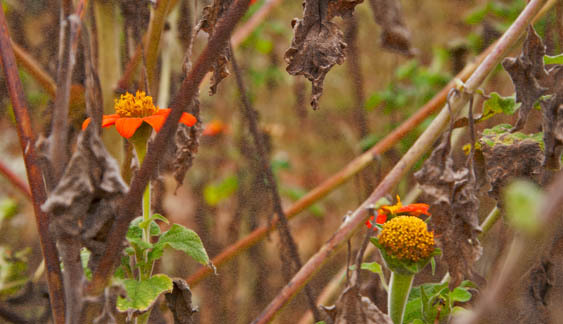
It crept us on us. We didn’t notice fresh stirrings of interest in two particular Anson Mills ingredients until four months ago. Then we had to wonder what might be driving demand for our coarse yellow cornmeal and farro piccolo, and whether the two had any meaningful connection with each other. We believe there is such a connection, and that it is related to an overall heightened interest in rustic, farmstead ingredients—and the way pre-industrial small farms in the United States and Italy grew and processed their own food.
In America, small farms grew and milled corn by hand to make foods for their table. During fall harvest, they produced plenty of beautiful new crop coarse cornmeal sifted from corn grist. There is a striking difference between coarse cornmeal and run-of-the-mill cornmeal, and the former is fast disappearing—to the point where grocery stores and shops in our region do not offer it at all. A word about the Southern culture of coarse cornmeal around Charleston: no Sea Islander would ever use fine cornmeal for breading and frying. These foodways call for seafood you yourself caught; a black iron skillet seasoned to a mirror-like sheen; and fresh, small-mill, hand-produced, very coarse meal to coat the seafood. Today we’re seeing a rise in understanding and appreciation of this style of food even as it disappears.
Just 10 years ago, farro piccolo production in Italy had all but vanished. Before the Industrial Revolution, however, farro was grown in obscure reaches of Garfagnana and harvested abundantly in the fall. Rather than milling it, farmers tossed whole farro berries instead of pasta into the soup pot, along with local fall vegetables. Today, Tuscans in particular have begun to revisit this legacy and cook according to their ancient traditions of rural small-farm foods. On our side of the Atlantic, interest in Italian small-farm heritage foods is just beginning to surface.
At Anson Mills, we’re drunk with harvest bounty now—we call this the Season of Moonshine. So dive in with us and explore what is new, ancient, unique, and memorable in the culture of rustic foodways.

Cornmeal-Crusted Black Skillet Fish with Shallot Sprinkles
Quick-curing fish in lemon before sprinkling it with sea salt as we do here harkens back to the time when folks cured their fish in a bucket of seawater and made their own local salt. This quick cure is the only thing between your fish and cornmeal, which locks in the fish’s flavor and moisture so the coating develops its quintessentially Southern crackling-crisp finish. No flour, no egg dip, no nothin’.We noodled around and doctored the cornmeal with homemade dehydrated garlic and shallots, then promptly backed off the garlic altogether, and deconstructed the arrangement further by sprinkling crisp, dried shallots on top of the fish after it was cooked. A superbly simple pan-fry of striking flavor and texture to serve with greens and winter squash or on a bun. You will love it.
Farro Minestrone
Minestrone is a riotously bountiful soup, deeply layered and profoundly comforting to slurp from a spoon. It is also one of the oldest foodways in Italy. Originally made with ground cereal grains, available vegetables, and broth, we tricked ours out just a bit with the fall’s best vegetable flavors, rich chicken broth, marbled pancetta—and farro piccolo. Does this soup need farro? Arguably not. But what a terrific postscript its quenching chewiness makes!
Happy Season of Moonshine, y’all—and Good Food!
Late Summer at Anson Mills
August 2013

We, too, despair to see Summer in the rear view mirror, her faded caftan dragging on the road, her grilling tongs aloft. Before we go, before she goes, how about a couple of desserts to conclude the merriment? Yes, we’re late . . . it’s late. We went on vacation and all you got were these lousy recipes.
Except they’re pretty great.

Blueberry and Nectarine Cobbler with Buttermilk Biscuits
Cobbler is the most satisfying arrangement of fruit and pastry to sit on a spoon—and perfect casual vacation fare. Here, the optimal August tryst of blueberries and nectarines meet Fluffy Southern Biscuits. Baked with their shoulders touching so the sides stay soft, fluffy Southern biscuits stand tall, proud, and fair. Too often, regrettably, they are sullied by flavorless overprocessed flour and stung with baking powder. A good biscuit must be more than a way of conveying butter to the tongue or keeping warm fruit company. A good Southern biscuit must be one part softness, one part crispness, and one part big wheat flavor in an uncombative (read soft biscuit) form. Here floats an entire fleet of such biscuits on a sparkling sea of fruit. The perfect summer day.
Toasted Benne Ice Cream with Butterscotch Swirl
Ice cream, Persia’s gift to the world and adopted by every culture, country, and season on earth, is refreshingly without controversy. It survives weird trends like bacon and bubble gum, safe in the assumption that vanilla will always be Mother’s favorite child. Glenn announced early in the year he wanted an African sesame (or benne) ice cream. We knew the flavor of the seeds was curiously irresistible. We knew our benne cookies possessed a broad fan base. We figured the story would have a happy ending—especially after compelling butterscotch into service. Yes. Wow.
Here’s to the pleasures of August, y’all, and Good Food!
Late Spring at Anson Mills
May 2013
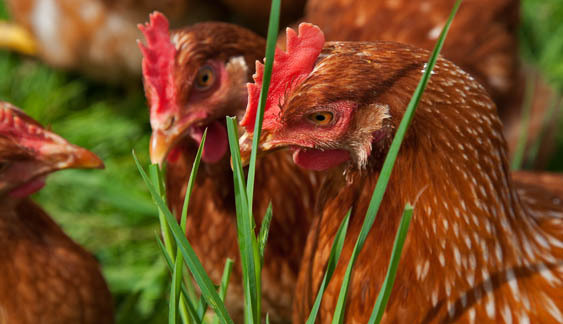
With these eggs . . .
We’ll all have some pie in a minute. But first we offer an apologist’s nod to the egg and its mother. What a completely miraculous little primogenitor, the egg, yet how utterly taken for granted! To be lauded one decade, maligned the next. And its mother! How fortunate the fate of some hens, how dreary the fate of others. If you were a chicken cooped up in a filthy, overcrowded apartment with nothing to eat but junk, how great would your eggs be?
Now imagine yourself as a hen pecking around the grounds of a country estate surrounded by lush pasture and unending dining delights. You’re well exercised and well fed. Stress free. How great would your eggs be now? They’d have beautiful red-orange yolks and high-standing, clear, bright whites.
It is the honest pasture life and short-stream rapid distribution network that separates great fresh eggs from “fowl.” And if there are trending national pastimes, backyard chickens and their fabulous fresh eggs certainly fall into the top ten. The point is this: outstanding eggs are easy to find—and they don’t cost a fortune, either.

Key Lime and Chocolate Cream Pies
To say that Key lime and chocolate cream pie fillings showcase eggs is an understatement. The fine, lofting foam of the former’s meringue and the plush satiny filling of both pies, depend—indeed rely—on egg quality and performance. The fathers of French cuisine all concede their debt to the brilliantly simple egg. In fact, one of the five great mother sauces is made with beaten egg yolks emulsified with warm butter. We call it “hollandaise.” Mayonnaise is the same deal with oil. What do fish mousseline and chocolate mousse have in common? Crème anglaise and crème brûlée? Pâte à chou and oeufs à la neige? Dacquoise and pavlova? Sabayon and spätzle? Quiche and flan? Avgolemono and egg drop? Not to overdrive the point, but eggs can both clarify a liquid and thicken it. Nogs, sours, and fizzes all rely on eggs for their luxurious textures. Are we done here?
Not so fast.
Graham Pâte Sucrée
Every great pie needs a great crust. From colonial days forward, early summer in the South has celebrated the harvest of May wheat, named in honor of the month it ripens. Some of the best graham flour was made from Red May wheat, which we are harvesting, not incidentally, right now! For these two American icebox pies, we built a different kind of graham crust—a graham crust without the crackers. And wow, what a crust! Deeply nutty, crisp beyond shatter, sweet new crop graham wheat flavors, and the beguiling flecks of caramel crunchy bran. This crust is so rivetingly good, we might do an entire summer of pies with this crust. You wouldn’t mind, would you?
Let’s have some pie, already!
Here’s to chickens, eggs, and pie, y’all—and Good Food!
Late Winter
March 2013

We never expected to be wading around in the androgen swamp known as chili. Goes to show what can happen when you want to introduce a great little bean. Now, a bunch of you will protest that chili is no country for beans. But our chili and beans never actually make contact with each other. They aren’t even on the same page! You may arrange an introduction should you be of a mind—or enjoy each on strictly individual terms. Personally, we think them rather a smashing couple.

LOST AND FOUND SEA ISLAND PURPLE CAPE BEANS
A new-old tiny heirloom inspired everything within this issue of Anson Mills news. Before the Great Depression, Sea Island Purple Cape Beans had an illustrious history in the fishing and farming families of rural Cape Romain, a sea island wilderness north of Charleston. Until three years ago, we hadn’t seen any local Cape beans since the 1980s. Then we found some ex-pat Carolinians—growing them in the Midwest, of all places! They had discovered the seed through relatives in Costa Rica. Over the past three years, Anson Mills has coddled these little beans back to life in their original habitat, and two years ago, we began sharing Purple Cape Beans with farmer and chef friends—just as we do with all our heirlooms. Everyone who knows these beans loves them—so much so that we now have a waiting list. But because we allocate what we make available, we decided to allocate some for you! Sea Island Purple Cape beans produce purple stock when simmered slowly and cook to a silky, smooth texture. They have deep flavors of the wild regions within Cape Romain, and a bare whiff of smoke. This is a great bean for cooking on its own and pairing with rice, of course, or as a partner to all manner of ingredients, especially game, beef, and seafood.
Consider this sleek foundation recipe, Slow-Cooked Purple Cape Beans, the first of many to come featuring these elegant little beans.
LOST AND FOUND CHILI
Our take on chili began in a storm of fire but ended driven by chili’s historical roots, not by what we see in modern American recipes. We examined the diverse spectrum of chile plants in North America and experimented in the kitchen to find a combination of dried chiles that prefers less dynamic cooking and that begs for a gentle hand and slow flavor development. The combination of chiles, ingredients, and techniques we favor in this recipe produce a chili whose flavors possess the visual dimension of quietly shifting Northern Lights—not a meteor shower—and bold but subtly different flavor sensations with each spoonful.
Welcome to our Lost and Found Chili where flavor depth and dimension become the goal, and the magic of chiles determines its compelling outcome.
CORNBREAD CROUTONS
Bake our cornbread batter in cast-iron muffin pans, slice them into coins, toast them buttered in a pan, and you’ve got yourself a world-class chili enhancer.
See y’all in the Lost and Found—and Good Food!
Winter at Anson Mills
January 2013

REORIENTING OURSELVES
One day last year out of the blue, our friend Dawn said, “You guys should make udon and char siu bao with Anson Mill flours! I bet they’d be fantastic!” For those of you who haven’t touched a pair of chopsticks in 10 or 15 years, udon are thick white Japanese noodles traditionally served in hot broth, or dashi. The udon craze reached pop-culture hysteria a few years back, which is funny since almost no one, not even the chefs who serve it, makes the noodles from scratch. The dish has become all about broth and trimmings.
Char siu bao, from Guangdong province in southern China, are steamed buns (actually more of a bread dumpling) filled with sticky, diced Chinese-spiced barbequed pork. A deconstructed version of the preparation—slices of barbecued pork belly nestled in soft folded buns—is a signature and oft-imitated dish of Chef David Chang. But Chef Chang’s dish is all about the pork—the buns in question come from an outside vendor.
We were intrigued by Dawn’s ideas, but cautious. Culinary classics from far-off lands—especially former cult icons—give us pause. So we paused. We’re comfortable digging around in our own cupboards, but in an exotic Asian larder? We do fancy ourselves nimble with dough, noodle, or bun . . . but could Fingerspitzengefühl deliver us from sin?
Then again, we are rather proud of our wheat. So we said, “Eh, what the hell?”
Cuisine untouched by Western influence resides only in the mystical past of the Far East. We knew Western influence had, over time, trespassed upon these dishes. What were they supposed to be like? Our virtual journey took us to intermediate stops on the West Coast—and then to the Orient.

UDON
This one we threw right back at Dawn. She is of Japanese ancestry, loves food, and is proficient in several Asian cuisines. She also lives and eats in the Bay Area, where descendants of Chinese and Japanese immigrants nurture their iconic foodways more faithfully than anywhere else in the country. Employing the timeworn Japanese treading technique to knead the dough, an ever-decreasing percentage of water in the recipe, and her characteristic doggedness, she eventually produced udon with correct resilience and lovely new crop wheat flavors with our French Mediterranean White Bread Flour. The noodles swirled round the bowl and slurped silkily down the throat. Her dashi had clarity and depth, and the mirin-seasoned morsels of chicken and shiitake garnish were tender and satisfying. But Dawn, a strict traditionalist, wasn’t satisfied: instead of their customary alabaster hue, these noodles shone an earthy off-white. The visuals were all wrong! Dawn made her recipe again with commercial flour. Pristinely white, check. Correct texture, check. But compared to the heirloom wheat noodles from Anson Mills flour the snow-white udon carried no flavor at all. This clinched it for Dawn. There was no way she would go for a merely pretty girl when the unconventionally pretty girl next door was so compelling.
We had a feeling udon had not always been so white. Turns out we were right.
CHAR SIU BAO
Char siu bao is historically inseparable from dim sum, the small bites that began in teahouses serving rural workers along the Silk Road. Dim sum moved from the country to cities, became snacks at the center of informal daytime gatherings, and then assumed its modern identity as an endless brunch in steamy dining rooms with noisy patrons and snarls of food carts burdened with food.
I (Kay) have sampled steamed pork buns from dim sum carts and steamed pork buns from Chinese bakeries. No matter their form or size, I find myself feverish to grab one and sink my teeth into it. Nothing lets you sink your teeth as delectably as char siu bao: cushiony soft, finely pored, and utterly yielding, the first bite brings a hot puff of yeast and spice up your nose before the dark, sweet sauce bearing a dice of sticky pork trails over your tongue. The back teeth close around the softness of the dough. When done right, these buns hit every crave button known to man: sweet, savory, salty, yeasty, rich.
When done right. They can be as sweet as sticky buns, their filling a mangle of fat and gristle that dyes the tongue deep red. Dry, yawning, flavorless—you name it. The real problem here (with few exceptions) is that char siu bao has been low-balled to death with bad ingredients and kitchen shortcuts.
This was about to change. One ingredient to inform the change: Anson Mills Colonial Style Fine Cloth-Bolted Pastry Flour.
Come with us as we lead two classics back in time.
Happy travels, y’all, and Good Food!
Holidays at Anson Mills
December 2012

Over the past few years, we have offered our readers holiday fare abundant enough to induce a coma: cornbread and oyster dressing, cranberries with farro and chestnuts, creamed pearl onions, spätzle and cheese, Carolina shrimp bisque, raised biscuits, apple dumplings, Indian pudding, mulled Bartlett pear crisp, and squash pie.
Fine samplings all (a few, we’d venture, true exemplars of their type), these dishes require a degree of planning and some measure of expertise. But how about a holiday recipe that offers respite from the complex, the strategic, the craftsmanlike? How about a recipe that comports solidly with our most basic metric (spoon, pot, stir), yet is, nevertheless, uniquely delicious? A recipe easy enough for a child to make on Christmas morning—indeed on any morning, anywhere?
We present a traditional American sour cream coffee cake: no kneading, no proofing, no plaiting. Simple. Yet this cake is far from a charwoman’s daughter: so moist, so lush, so buttery under her fine crinkly glaze, so dizzy with vanilla, so bright on the palate from the sash of red preserves at her waist that you will scarcely be able restrain yourself when you pass this simple cake in a room.
Kay

BUNDT DE NOËL
Though her mother was a gifted natural cook, my own mother was more cautious than adaptive in the kitchen, and categorically not having any fun. The last thing she wanted was me in her way. As a result, my childhood culinary specialties numbered exactly two, and I prepared them in a hushed, empty kitchen—alone. The first: Jell-O pudding. Cooked over punishingly low heat while I stood on a chair at the stove, the transformation from sloshy milk to glossy bloop bloop was the opposite of instant, and demanded rather more of me than I was prepared to give. “My arm hurts!” I’d wail. When the pudding was finally done, impatience scorched my tongue every time.
The second: Sunday morning coffee cake. It was made from a mix that came as a boxed set. The set contained a plastic bag of dry ingredients, a packet of streusel, and a trembling little aluminum baking pan only about an inch high. I dumped milk and egg into the plastic bag and massaged the bag until its contents became batter. Then I squeeeeeezed the batter into the pan and dotted the streusel on top. Glimpsed through a foggy oven window, the cake was wondrous to behold, bursting forth from its flimsy pan like a superhero, slick batter giving way to a golden matte finish, and streusel blooming winsomely on the top.
That childhood baking experience provides the spectral inspiration for our Bundt de Noël.
Here's to fresh memories, y’all, and Good Food!
Summer at Anson Mills
July 2012

Hey, everybody!
It’s been a long time. We’ve been meaning to write—honestly. But we found ourselves burdened with creation. The seeds we sowed to bring Anson Mills’ website 2.0 into being demanded enormous care and attention. As we beheld the new Anson Mills take root, grow green, and flourish, we found ourselves unwilling to return to the parched mustard walls of the original site—except to pull content off of it!
Click around! Our design and development teams have worked themselves silly to produce this website. We think it is clean, beautiful, and supremely functional. Fresh information and new images inform many pages. We hope you like the results. Stay tuned for regular updates. We’ve missed you!
Kay and Glenn

County Fair Kettle Corn
Popcorn couldn’t be more American. My grandfather, who ate it nearly every night before bed, called the salty-bald kernels in the bottom of the bowl “old maids.” For breakfast he’d sprinkle leftover popcorn with sugar and flood it with cold milk. It is still my favorite cereal. More grandly ceremonial in their traditions, Glenn’s family sourced popcorn from local Native Americans in Mission Valley, and popped it on an open hearth in a long-handled heirloom iron popping basket whose sliding filigree lid was punched with tiny holes. (The children’s burns were epic.) Neither of our childhood experiences comes anywhere near that poor flatulent paper bag lying bloated in the microwave. Yet this is just how many Americans today experience the miraculous ancient native foodway known as popcorn. Ding!
Well, we’ve got a cure for that! This diminutive heirloom yellow flint popcorn is naturally so sweet and alive with floral honeysuckle notes that it doesn’t really need a damned bit of embellishment. Our two dogs go mad for this corn, which we toss—in aforementioned virginal state—into the air like confetti while they swarm, snapping, at our feet. An admirable balance of light crunch and puff with outrageously rich toasted corn flavors, it pops to a diverse collection of shapes as well—Native Americans likened the changing shapes of their oldest maize food, to clouds.
Next, with a nod to early summer and fairs across the country, we present old-fashioned kettle corn made at home: shatteringly crisp, subtly sweet with dimensions of light parch corn and faint caramel over the big aroma and flavor of glorious summer corn. Think of it as a sensory preamble to fireworks: each kernel explodes and fluoresces while popping, and when you taste the kernels, it is as if you have captured the taste sensation of miniature Roman candles.
Sit back and taste the show!
Here’s to Anson Mills 2.0, y’all, and Good Food!
Winter at Anson Mills
January 2011

As this hard-charging, old-fashioned winter moves from thigh-high snow and mad blue skies toward the tattered, spongy gray of its late season declensions, we experience a nostalgia of appetite. Not appetite in a candlelit braise-and-Barolo way, but appetite in a bounce-out-of-bed, butter-melting-on-flapjacks kind of way. We’re hungry for the days when we awakened in an attic bedroom to sweet smells and swift movements below, and to a breakfast somebody wonderful—like our grandmother—had prepared just for us. Breakfast always liked winter best.
Of course, when Glenn and I think breakfast, we think of our Scottie who demands and receives his the moment a human being stirs. After that, we think Southern breakfast. It’s our default setting to be sure, but when it comes to breakfast fantasies, nothing compares with the exuberant excesses of an old-school coastal Carolina breakfast, a meal so extravagant it might take two ovens, two generations of cooks, and multiple burners firing on all cylinders to get it to the table. Southern breakfasts offered alluring foods kidnapped from other meals, like pie—and pork chops. The procession of dishes alone would set you back a couple of thousand calories before noon: eggs, grits, biscuits, griddle cakes, fried apples, farmhouse sausage, country ham, smothered pork chops, red eye gravy, buttermilk pie, pickled peaches, honey, sorghum, preserves, fresh butter, and black coffee.
As charming as this vignette is to contemplate—in a he-man sort of way—unless your day begins at 4:30 a.m. with farm chores, your kitchen is huge, and you’ve scheduled your mother and wife for the morning shift, this larger-than-life style makes no sense. Yet the late great coastal Carolina plantation breakfast retains interest as historical artifact alone by virtue of the culinary treasures it gave birth to, treasures that African slaves—who cooked and served these meals—took with them as freemen and -women after the Civil War. Southern culinary legacy owes its very existence to African-Americans, who became the masters and preservers of black-skillet cookery and the iconic dishes it created—many of which began as breakfast foods.
When Glenn was a boy, from time to time his mother prepared a special Sunday breakfast of waffles and gravy, served with fried chicken. She adopted this meal, Glenn’s favorite, as a girl during the Depression on Edisto Island where she lived amid wealthy families whose ancestors had invented this grand breakfast tradition, and poor black tenant farmers whose ancestors had cooked these foods.
And here we begin.

Southern Fried Chicken, Waffles, and Gravy
Fried chicken is universal. Southern fried chicken is not. Southern fried chicken is bound by more mystery, myth, and attitude and than almost any American dish we can think of. “Don’t you tell me how to fry chicken!” “That’s not how Grandma did it!” Unless you happen to be the direct namesake of your family’s fried chicken recipe (a matriarchal endowment), it is heresy for you to alter it. If you do, your relatives will notice instantly and express their displeasure with kind words only a Southerner would recognize as censorious: “I just love your fried chicken. It’s so much like Grandma’s!” The mild xenophobia encircling a beloved dish like fried chicken captures a bit of the zeitgeist of what it means to be Southern. It’s not everywhere you can commit murder with politeness and get away with it.
Here is another thing: Southerners can’t eat anything without a sauce. Butter is a sauce. Gravy is comfort food. One might be inclined to credit haute Huguenot lines for this fancy, but it is actually African influence that drives the savory side of Southern embellishment. Breakfast gets sauced, too. You will remember our Slow-Cooked Sea Island Red Peas, a dish served over rice at breakfast on New Year’s Day. And don’t forget biscuits and gravy, sausage gravy, red eye gravy, and shrimp and grits—and gravy.
In the great homes of the aristocracy, African slaves cooked and served an explosion of foods at breakfast. Along with all manner of main-course fare, there were inevitably gravy, grits, rice, and cakes. Of all the cakes—pan, oven, griddle, and fried—the most important were iron cakes. The recipes for these iron cakes, or waffles, were unique to their particular family (the irons themselves were emblazoned with the family crest), and the finest of them were made with rice flour. Imagine the appeal of bespoke waffles adorned with butter, syrup, fruit, preserves, honey, sugar—and of course, gravy!
Waffles, fried chicken, and gravy is a venerable old Southern dish. We don’t know how the West Coast export called Roscoe’s ended up serving their fried chicken and waffles with maple syrup, but we feel confident in saying that our version is far more authentic—and a lot tastier—than theirs. Rice waffles with sweet toppings are fantastic, of course. Just leave the chicken out of it.
Blue Corn Pancakes
Blue corn reflects its ceremonial heritage with a flavor profile as dramatic as its color. From ancient times on, Hopi brides have prepared multi-leafed cellophane-thin blue corn bread to celebrate their weddings. Imagine of a stack of translucent corn chips the size of a folded newspaper and you will have a vague appreciation of blue corn magic.
Anson Mills’ expanding family of chefs has explored this magic for years because Glenn has grown blue corn and produced blue corn products since Anson Mills was a baby. But for the past two years, Glenn experienced a significant rise in requests from home cooks for his blue corn products. He also realized he was making increasingly frequent exceptions to the Anson Mills chef-only blue-corn policy. So guess what happened?
Welcome to the world of Anson Mills blue corn products, people!
To celebrate this new entry, we developed a recipe for blue corn johnnycakes. The principal ingredients here, blue cornmeal and dried wild blueberries, are each native plant foods. Together with maple syrup—which no johnnycake would be without—they fit perfectly into the sphere of Native American winter cookery as well: where maples grow, winter is sugaring season, and a certain cache of dried summer blueberries and blue corn remain tucked away against the snow and chill.
These simple cakes pull together the earthy tones of blue corn, the bright ping of dried blueberries, and the sharp sweetness of maple in a super-thin, crispy patty with a piping-hot, creamy corn-mush interior.
Here’s to breakfast y’all, and Good Food!
Summer at Anson Mills
June 2011

As months go, June is unassailable. It holds the longest day, the lushest greens, the sweetest peas. Its calendar heaves with commencements and betrothals. Roses bloom and strawberries blossom only in June. Fireflies flare against June’s night skies alone. Its birthstone is the pearl! Fresh and unfettered, June knows nothing of the clawed, parched trail of summer days to come, and returns, every year, as deeply and perfectly June as ever.
What does this have to do with our newsletter? It is a point of departure for a celebration of essence—the essence of great ingredients and their aptitude for producing quintessential flavors, the essence of outstanding dishes. Consider our utterly virginal White Lammas Cake Flour. We turned it loose in a mixer and came up with a coconut cake that is the flavor essence of an old-fashioned butter cake. Consider Anson Mills’ new Farina di Maccheroni ‘oo’ Crema, the definitive handmade flour for fresh sheet pasta. It showed us the way to fazzoletti and ravioli, as fine and extensible as skin, with unsurpassed delicacy of flavor and texture. Consider Anson Mills’ Laurel-Aged Charleston Gold Rice, an aromatic long grain, years in development. It produces cooked grain-for-grain rice comparable to the famous aged basmati rice of India.
Each recipe we feature in this newsletter relies on precise execution that urges the use of weights over measures. We recommend weights in our recipes, anyway: it’s a cleaner, faster, more reliable way to cook and bake. For these particular recipes, however, the scale is essential.
This is exciting food all around, each dish the absolute essence of itself. Glenn calls it putting truth on the plate. I call it June. No matter what you call it, it’s time to eat.
Kay
We begin with dessert. Don’t you always want dessert first anyway?
Coconut Layer Cake
Coconut cake has been celebrated and revered in Charleston almost to the point of fetishization. Its history as the wedding cake of choice is so considered, so regimented, so delineated that there are “rules” about the number of layers, the color and composure of the cake layers, the thickness and style of frosting, whether toasted coconut should be permitted for the just-fallen-snow finish—and so on. Well, we don’t want to step on anyone’s layers here, but when the institution in Charleston most honored for its coconut cake, the Planters Inn, makes its with pound cake layers, we feel a bit of breathing room might have opened up.
Now, we don’t suggest you acquire fresh coconut for your cake unless you happen to live where coconuts grow on palms in your front yard. If you set your bar for authenticity this high, you’ll likely never finish the first cake, let alone make another. (By the way, those supermarket coconuts, off the tree for years, won’t do anything for your cake). Our second suggestion is to avoid chemical or synthetic flavorings, coconut syrup, creamed coconut loaded with sweetener, etc. Set the bar for authenticity this low, and really, why bother baking at all? We follow the coconut middle ground.
That said, we think this cake is nearly an authentic replica, drawing close to authenticity based on the attributes of its flour alone: Anson Mills Artisan Fine Cloth-Bolted White Lammas Cake Flour is the only handmade unbleached cake flour on the market. These are differences you won’t fail to notice.
Fazzoletti and Ravioli
We prepare Farina di Maccheroni ‘oo’ Crema by hand to order for various subsets of Anson Mills’ chef clients: some are chefs you might recognize or read about; others speak less English than Italian; still others are content to produce great food with little fanfare. All of them want for authentic Italian ingredients. These chefs and their patrons consistently praise the virtues of pasta made with Anson Mills Farina di Maccheroni ‘oo’ Crema, citing its silky texture, beautiful color, see-through finish, and unique, delicate flavor.
The sheet pasta recipe we’ve developed for this newsletter produces a dough that is as lovely to work with as the pasta is to eat, whether rolled out in sheets and trimmed into handkerchief squares for fazzoletti, or contrived into more intricate, filled shapes like ravioli. We adore fazzoletti for its simplicity. It should be speared in layers with a fork and consumed messily—after the diner tucks a napkin into the neck of his shirt. Toss with red sauce, sprinkle with Parm, and say, “Bye-bye.”
The ravioli is a more refined affair. We keep the filling light and simple for summer with a straightforward basil, ricotta, and aged Reggiano combination, and float the ravioli in butter-enriched chicken broth, a smattering of fresh, shelled peas, and a big pinch of chives. The clarity of the pasta’s flavor shines in this interpretation.
But our weakness, frankly, is for red sauce.
Laurel-Aged Charleston Gold Rice
So we’ve got this newfangled “Chaaahston” rice, born of that “old” Carolina Gold rice. And wow, this is phenomenal stuff! Charleston Gold rice was created over years using descriptive information and taxonomy of a famous lost long-grain rice cultivar called Carolina Long, and everyone’s favorite lowcountry rice, Carolina Gold. Not only has baby inherited the finest attributes of each parent—long grain, golden hue—but it has an appealing characteristic neither parent can claim: Charleston Gold is aromatic like the perfumed rices of India and South Asia.
But that’s just half of what is so exciting.
The second half of this story takes us back to the early 1800s when the finest estate seed stock of Carolina Long rice was sealed in barrels with wild red bay leaves to preserve it for three years. The rice was not thus stored to improve its flavor and cooking attributes; it was stored to preserve three successive years of rice seed against catastrophic loss. (Farmers who collect and supply their own seed have a three-year seed reserve, to this day.) One collateral benefit of these stockpiles was that growers with successful rice crops over seasons were able to sell some of their reserve seed to elite customers in Europe. When they did, they discovered that the rice, over time, had become infused with a delicate nutty perfume backed by hints of laurel and faint sweet vanillin. These aromas created a distinctive mélange of flavors in cooked rice. But the most interesting and valued characteristic of laurel-aged rice was its grain-for-grain integrity and decisively firm texture. And this, too, is yet another advantage of barrel aging, which gently removes moisture from the grains.
Through its long work with the Carolina Gold Rice Foundation (of which Glenn is a founding member), Anson Mills debuts Charleston Gold rice to the public. But the rice we offer here is not merely baby Charleston Gold. Rather, in the great tradition of lost rice, it is three-year-old, barrel-aged, laurel-scented Charleston Gold! And you, dear Reader, may be among the first to sample the flavor and texture of the past.
(Read more on the backstory of Carolina rice and the development of Charleston Gold rice here.)
Kedgeree and Quick Mango Chutney
I have a number of friends in the food world, but few who are closer to me than Dawn Yanagihara. Dawn and I share a kindred spirit of inquisitiveness wrapped in rebellion wrapped in inanity when we consider the “haute” world of cooking, and we have similar sensibilities that arise from shared experience in food media over the last couple decades. Dawn is an outstanding cook and meticulous writer (who also edits all my copy). This past spring when I was in a scheduling crunch and needed help with this newsletter, I immediately reached out to Dawn. I asked her to draw from her personal history and love of rice to commemorate the birth of Carolina Gold rice’s new child, Laurel-Aged Charleston Gold, with a special recipe. Dawn is Japanese-American Geechee whose family consumed rice every single day (the definition of “Geechee”), including alongside traditional American fixins at Thanksgiving and Christmas. We’d been discussing how to combine elements of the East, Europe, and the New World in our approach to Charleston Gold. Only Dawn would have come up with kedgeree, the Anglo-Indian long-grain breakfast dish associated with the British Isles, which bears a confused and fascinating history. Kedgeree struck Glenn’s own Geechee fancy, too, because it is the perfect any-time-of-day meal, not just breakfast. Glenn immediately traced the kedgeree to its supposed African influences and placed its origins in Charleston, but we managed to shut him up with a bowl of this phenomenal food.
The homemade mango chutney, which tags along most winsomely with the kedgeree, is my contribution.
Happy June, y’all, and Good Food!
Autumn at Anson Mills
October 2010

Those of you who wish to experience the real slow food movement should try sitting all day on a tractor moving at three miles per hour. I’ve spent hundreds of hours in this ever-widening gyre over the past decade and a half, an occupation that numbs the body but allows the mind to take excursions. Recently, in a field planting wheat, my thoughts settled on the contradictions within the “all food is local” paradigm.
We’re hearing the phrase “local food radius” thrown around pretty aggressively these days. The radius for local food is the area measured in any direction from an urban center to the distant-most farms required to supply its citizens food. But what constitutes an appropriate radius is often up for debate. It changes from rural to metropolitan settings, for instance, and depends on the farming system in question, as well.
An ideal network for local boutique vegetables grown in rooftop and community gardens, or on small farms, might be as snug as 25 miles in any direction of the city. Heritage meats, poultry, and wild seafood expand the accepted local food radius to between 100 to 250 miles from the city center. Grains, needed to support vegetable and animal husbandry with cover crops, feed, crop rotations—and humans with food—extend the local farmland radius to between 250 and 300 miles. In other words, the group mind of our national local foods movement endorses more than one sustainable radius.
The most rigidly conceived local food concept is pitched in various iterations as the “100-mile dinner.” This is a meal for which the host sources all ingredients within a 100-mile circle surrounding the dinner’s venue. The 100-mile calculation is good PR because it provides a simple metric to satisfy our desire to establish environmentally creative boundaries.
But these arbitrary definitions of “local” foster a widely accepted view that local sustainable foods can be sourced over the long term from an unrealistically small network of farms. One hundred–mile dinners and the like are based on an imaginary food production structure that is scaled more toward colonial Williamsburg–style farming reenactment than the real world sustainable farming network required to supply a city into the future.
Anson Mills has farmed within a low-impact sustainable system for years. We network throughout the South, and still achieve only about 50 percent success in a good season. The failures are psychologically brutal, but crop failure teaches lessons with equally brutal effectiveness: “Don’t do it this way again,” and “Grow crops in diverse places.” The simple operative is that low-impact sustainable farming requires a lot of land. This reality leads to our conclusion that modern “local” food radius guidelines must increase dramatically to achieve sustainability over the long term.
Our histories of colonial farming provide a basis for calculating a realistic modern local sustainable radius for grain farmland to feed a city. The array of surviving colonial farm journals and freight manifests state clearly that the sustainable foods radius of our colonial grain system encompassed the entire Thirteen Colony region, from Maine to Georgia. That land mass was necessary to guarantee crop, animal, and human survival. One particular Thirteen Colony wheat delivered its own brutal lesson during the early 19th century.
White May, an heirloom wheat within the large European class called White Lammas, grew robustly on farms from the lower Hudson Valley to Georgia from the early 18th until the early 19th century. White May disappeared from our farms because its seed and production were neglected as other strains of wheat were being over-farmed to provision the War of 1812 in Europe. Because insufficient acreage was dedicated to assure the survival of White May, its farming population reached a minimum tipping point and its production declined to extinction in fewer than five years. White May is not in our seed banks today. Sonora white wheat is the only White Lammas–class heirloom wheat surviving in the United States—and it is still threatened with extinction. Anson Mills grows Sonora white wheat in the Carolinas in place of White May.
Here is the lesson we learned from this example, a thick catalog of other lost crops, and our own farming experiences: the currently accepted maximum sustainable local food radius for grain systems to feed our cities should be doubled now and increase as we deplete American prairie land and aquifer resources.
In this Anson Mills newsletter, we celebrate the real sustainable radius of low fertility, low diesel, low carbon imprint heritage wheat to spotlight how one crop can regain its place in a realistic “local” food system. We present angel food cake made with cake flour milled from White Lammas wheat. The cake is ethereal and familiar all at once, with the White Lammas wheat background flavor ping of natural, faintly honeyed sweetness and exciting mineral notes you can taste well beyond the sugar. These flavors represent the field contributions of deep roots and tall straw of this noble wheat.
We hope a simple cake made from nearly extinct wheat will compel you, our readers, to reflect on the lessons of American farming history that reveal realistic ways to be local and sustainable, not just local. Think big, think broadly, have some cake.
Glenn

Classic Angel Food Cake
This was our first choice for trialing the baking properties and flavor release of Anson Mills’ new Artisan Fine Cloth-Bolted White Lammas Cake Flour. An egg white meringue folded with flour! What could be more starkly minimal? You can’t fool an angel food cake—it is quick to expose any deficits in ingredients or technique. Super-fresh egg whites and superfine sugar are comme il faut, of course. A practiced folding arm will be appreciated. But flavorful cake flour, arguably the deepest contributor to a cake’s quality, has not been available—even if you went looking for it.
Commercial cake flour is not handled nicely. In order to promote its quick absorption of liquids, the industry impact-bolts soft-commodities wheat flour by banging it against a fine screen to force it though the holes. The flour is generally also bleached and otherwise processed. Not much left to enhance a cake.
White Lammas wheat, on the other hand, has been hand-selected over centuries for natural sweetness, whole kernel whiteness, and very thin bran layer. Our flour is unbleached and unamended. It came through its early, mid-, and late-stage development beautifully.
We were, nevertheless, fully unprepared for how utterly this cake would captivate us. There is something otherworldly about the texture of fine angel food—you can pluck off pieces like cotton candy, but it is soft and dry to the touch, not sticky. Its moist, translucent crumb doesn’t melt like sugar, but offers real presence (something approaching a light bounciness) in the mouth, as well as a subtle trail of vanilla. Its bronzed edges cross over to caramel. One never feels full from eating it. I made a dozen angel food cakes over the late summer and fall, and for me, at this moment, no other cake comes even close.
Posole Rojo
If we seem to keep tripping from Southern to Mexican food, there is a reason—a reason we hinted at when we presented Fish Tacos: before North and South, there was Native American, and Native American foods shine best in the Deep South, the Southwest, and Mexico.
Posole rojo belongs to the same culinary category as hominy stew, a traditional autumn dish of the South made with acorn-masted pork and fresh hominy. Though hominy stew is an authentic dish of our ancestors, we cannot deny that it pales beside the mesmerizing nuances of posole rojo. Made with a fortified stock, along with pork shoulder or country-style ribs, posole rojo is swept to hot, exotic places with the richness of smoked meat and a darkly spiced chile paste. It shines with fresh cilantro leaves and a range of exciting garnishes. In lieu of posole rojo’s dried hominy corn, we suggest the pleasing texture, bold corn and nixtamal flavors of fresh hominy corn. Native American medicine at its finest, posole rojo will cure what ails you.
Hoppin’ John Burgers
If you’re thinking black-eyed peas, think again. The original hoppin’ John took Sea Island red peas and Carolina Gold rice to the dance. And since we cleave to tradition—and love our Carolina heritage hoppin’ John—we created this dish for burger lovers, not just vegetarians. Our Hoppin’ John Burgers have the look and feel of real burgers—with “benefits.” The complex spices of old-fashioned homemade ketchup, plus a dash of prepared mustard, are built into the burger itself, so we can get chef-y with homemade mayonnaise and pickled jalapeños. You won’t believe how fast these will disappear. The homemade buns come courtesy of our Rich Sandwich Bread dough.
Here’s to broader local communities, y’all, and Good Food!
Post Script
By the way, our Native Coarse Blue Corn Grits and Pencil Cob Grits, formerly available only to chefs, are now available to retail customers as well. Have a look.
Summer at Anson Mills
June 2010
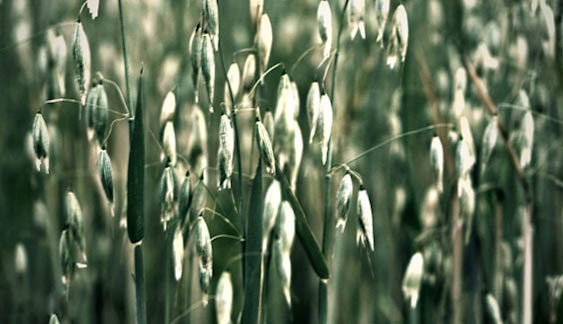
We find it difficult—impossible, really—to consider a celebration of the season without first acknowledging the grave circumstances affecting the waters, wetlands, and beaches along our deep southern shoreline, and without offering an expression, however inadequate, of piercing lament for the residents of this region—people and aquatic life alike who find their livelihoods or lives in peril.
Given the wrenching images that have attended us since April, and the certainty that more will come—to rub raw our sense of what is fair and just, and stir in us fresh sadness—we hope it will come as a small comfort to our readers that what we offer for June 2010 are simple pleasures: two products, three recipes. No bones to gnaw on, nothing weighty. It feels like the right thing to do.
Kay

Classic Sandwich Bread
The French have a name for soft sandwich bread that bakes in a straight-sided pan: they call it pain de mie (pain for bread, mie for crumb). As the translation indicates, pain de mie draws definition from its fine, moist crumb rather than from the vigor of its crust, and uses milk and butter to achieve this. Americans chose mass-produced flour and boatloads of sugar for their version of pain de mie, creating the fluffy confection known as Wonder bread. It is no wonder the concept needs redressing.
Of course, we realize in this moment of artisanal loaves with burnished crusts and high-strength properties that the idea of a specialty flour for sandwich bread might sound quaintly retro. But if softer heirloom bread flours—flours intended for sandwich breads, flours that possessed their own inherent sweetness—had not been abandoned for Plan B (bad white flour and sugar), Americans, like the French, might have an honored slicing bread tradition. Instead, we have a plastic bag painted with colored balloons.
Every baker needs a great recipe for classic sandwich bread. Butter-fried croutons, a stack of French toast, a soft finger sandwich, or a grilled cheese—each of these descends directly from classic sandwich bread. But more urgently than a recipe, the baker needs proper flour from which to craft a great sandwich loaf. You guessed it: we’ve got both.
Strawberry Oat Ice Cream
The biggest jewel in summer’s crown, strawberries occupy a special place in the season: first place. When they appear, it ceases to matter what their no-good wintry avatars were up to when they dipped themselves in chocolate for New Year’s Eve, or dropped in on a champagne toast. We’re thrilled to get our hands on real berries again. It’s the size, the scent, the juice, the jelly, the sweetness of summer strawberries that separate them from those other things bearing their name—the ones which seem, by June, more tragically ersatz than ever.
Abundant and glorious as seasonal strawberries are, what gladdens us most, no kidding, are sliced strawberries and oatmeal. Sound like a waste of grace? Not. It’s the old high/low, flavor/texture set-up that delivers: soaring sweet fruit perfume and juices pushing against oatmeal’s toasty common touch. It is the chilled, satiny berry slices with their peppery seeds dropped onto hot, nubby porridge, and a righteous current of maple syrup coursing through the center.
A casual indulgence like this requires no recipe, of course. But it did get us to thinking how fantastically summer strawberries and our toasted oats might pair in an ice cream. And, boy, were we ever right! Details here.
By the way, if you’re worried that we hit strawberry season on the late side, take heart from the fact that Tri-Star strawberries, a nice new hybrid, are available through August.
Benne Butter Cookies
Sesame seeds, which are called “benne” in the South, bear the imprint of an African past, but their culinary pedigree is truly international. We know them ground into paste and powerfully seductive in the native dress of tahini, and all it informs: halvah, hummus, and baba ghanoush—to name a few. We know them toasted and untoasted, processed into light and aromatic dark oil for Asian cookery. We know them at home sprinkled on crackers and buns. Wait, did we just say “sprinkled on crackers and buns”? Seriously? Given the cultural depth and culinary generosity sesame seeds offer, have Americans not figured out anything more interesting to do with them than use them as an accessory?
The folks in Africa, the Middle East, and the Far East know sesame seeds are at their most intriguing when a bunch of them get together and create of themselves something brand new.
Well, Anson Mills has grown out some real, old-fashioned heirloom sesame, and created something brand old/new: it’s called New Crop Heirloom Bennecake Flour, and it will have exciting and potent applications in recipes ahead.
You might wonder why sesame is called “benne” in the American South and why Anson Mills is growing and hand-processing benne. In the Colonial and Antebellum Eras, benne was grown for its extraordinary oil, its vital nutrients, and its culinary versatility. Benne also provided near magical enhancements to gardens by improving soil quality while protecting nearby plants from harmful pests. Benne became sesame only when rice plantations transitioned kitchen benne to their commodity fields for commodity oil production. The seeds became tasteless commodities as well. (Read more about the history of benne seeds in the South here.)
But here’s the bottom line: bennecake flour makes cookies—fabulous cookies that draw you in by hinting they are the best and most delicately flavored peanut butter cookies you’ve ever tasted. Then, like magic, the aromatics and flavors execute a beautiful swan dive and roll over your palate with a wildflower tang and the fresh verdancy of a field nearly visual in its clarity. We’ve seen children pulled unaware and unquestioning into this widening gyre of flavor. They are not interested in benne history or other explanations that distract them from consuming these cookies. They just dig in and go.
Here’s to Summer, to recovery and restitution for the Gulf, and to Good Food!
Spring at Anson Mills
April 2010

Hi, everybody!
We took a short break from the newsletter cycle this winter to groom ansonmills.com for upgrades to its e-commerce system—changes that will find full expression some paces down the road in an expanded new web presence! Toward that end, I have been busy writing background, taking pictures, and working with our design team to make ansonmills.com as beautiful and authentic on the outside as Anson Mills products are within.
When we finally glanced up, spring had crept in—the force that through the green fuse drives the flower—and the prospect of spring recipes flung us briefly into a pre-strawberry funk. We aren’t, after all, on the left coast with its ready supply of supple fava beans, sweet baby artichokes, and tiny English peas; we’re here in the upper registers and chilly elevations of New England. Spring’s tender prodigies—when they appear at all—arrive bedraggled from long travel, and much the worse for wear. A sense of suspended animation made us long for the culinary reciprocity of warmer days.
But anxiety vaporized (as it always does) when the recipes began to put on some weight: one emerges forthrightly a child of spring; one is spring-y and adaptable; and one is just plain fabulous, no matter what the season. We can’t imagine how we ever got by without them.
And now, without delay, a round of introductions . . .
Kay
Polentina
Glenn has spoken of polentina with reverence for years. An ancient soup drawn from the cuisine of poverty—simple broth, thickened slightly with polenta when corn itself was scarce—polentina achieved a longstanding foothold in Italy, where polenta iterations run from liquid all the way to hard bread. Embraced by Italian chefs in this country only on the margins, polentina, when presented, is generally a hot, rustic porridge with torn, wilted greens, and shredded cheese.
At its most elemental, no soup could be easier to fabricate or more surprising in the synergy of its two ingredients—chicken broth and cornmeal—than polentina. Its silky texture and pleasing lightness, and the scent of sweet corn drifting over layers of rich chicken stock proved so captivating we could have eaten ourselves full, scrubbed the pot, and called it a day.
But why stop there? We chose, instead, to imbue this soup with the language of spring: a fillip of satiny leek-scented custard; a crisp toasted-garlic crouton; a wreath sparkling of just-poached leeks. It is a simple dish that delivers spring magic, comfort, and sustenance in each spoonful.
Farro Salad
Something bright, fresh, and salad-y for spring seemed fitting, but it was early days yet, so we chose all-season vegetables in the wholesome, colorful, and crunchy range. There is no such thing, really, as an all-season vegetable, of course. But some sustain fewer injuries in the batting rotation than others—carrots, broccoli, red peppers, red onions—and they are the ones we chose. We gave this line-up a touch of glamour with arugula wisps used as herbs, a blast of spicy basil leaves, and a citrus vinaigrette. So far, so blah, right? Vegetables alone rarely rise to the level of surpassing interest, even with herbs. What makes this a winning combination, ultimately, is Anson Mills Farro Piccolo: tiny, sweet, lush, cathartic, and susceptible to flirtations from a full spectrum of flavors . . . no matter what the season. Eating this salad is so much fun you probably won’t notice how healthy it is.
Old-Fashioned Oatmeal Cake with Broiled Frosting
Not to produce the overplayed Proust card, but who among us can deny the depths of nostalgia stirred by a simple piece of cake? Its singular compactness, the moist weight of its crumb, and the wave of glossy frosting (sorry, Proust, but frosting has its own potent set of triggers) touch us more poignantly than other sweet things. Already a young woman when I first tasted oatmeal cake, its effect on me approached the rapture of a child. It was a plain, tan-speckled square, swooningly moist—indeed vaguely damp—with a little frill of cinnamon in an otherwise neutral crumb, and a broiled brown sugar topping, scratchy with coconut and sticky with pecans. It was also a cake that could make me feel slightly sick and stingingly repentant when I overindulged. Anything that lays claim to coconut, pecans, brown sugar, and butter captures lust and wantonness, too.
I hadn’t made or tasted oatmeal cake in years. But I got a notion to explore how Anson Mills toasted oats might perform in a recipe typically made with roller-milled oats: instant, quick, or “old-fashioned.” It took lots of tries, and thousands of calories—much to my horror—but this exceptional cake makes excellent use of our bias-cut oats. It has oat flavor, too, and a fine little spring in its moist crumb—no dampness. The topping, which is now officially a frosting, also saw revisions much to its betterment.
This cake is far better than I remember, and the remorse just as bad.
Here’s to restraint, y’all, and Good Food!
Holidays at Anson Mills
December 2009

Behold. The fifth season is upon us. It’s the party season, the season that glitters gaily on December’s dark dance floor, then fades, leaving baby New Year alone under the disco ball and Winter to her drab, somber pace. The fifth season, when fruitcake jokes return like a carol’s rolling melody, or a new strain of the flu. And when you hope you’ll remember that stunning insight about the crab toast recipe—the one you didn’t write down last year.
Yes, the fifth season draws even the reluctant among us into the kitchen at some point to face down old recipe demons, and try some new ones, too. (Recipes, that is.)
Our collection of recipes described below finds holiday flavors and wintry notes in abundance, tucked under crust and crumb, bubbling up in a gratin, or baked in a subtly spiced biscuit. They’re cold weather foods, layered the way we layer ourselves, though with flavors, not with fleece.
You’ll find two- and three-pronged cooking paths within individual recipes. These will guide the demon-seeker to heightened flavor and texture in the final dish. It doesn’t make the recipes more difficult—just a bit less linear.
Our crusade for flavor and dimension also accounts for why we offer recipes for meat, fish, and vegetable stocks—and hope you will use them—and why our recipes tipple a bit during the holidays. (Be not alarmed. They’re drinking responsibly, not boozing it up like a soused fruitcake.) These are among the elements that bring dimension, nuance, and body to each dish.
Simple is good. We adore simple. But we believe simple dishes should be intrinsically simple—buttered grits, scrambled eggs, linguine with oil and garlic, grilled chops, sole meunière—not reductively so. Winter foods like braises and casseroles have a homey, comforting quality. But this does not mean they are simple dishes.
Those who subscribe to the git-’er-done school of cookery like to call thoughtful recipes “chef-y.” Well! This is no restaurant setup, let me assure you. I’m standing in a regular kitchen by a 1980s electric range, no dishwasher in sight. My sole assistant is an eight-year-old Scottie with an average palate.
But the recipes are fabulous anyway.
I do hope you’ll get into the spirit of the fifth season and take a poke at them.
Kay

Wine Biscuits
Now here’s a dead easy recipe with some real elegance. Wine biscuits, served at Madeira tastings, came of age in 18th-century Charleston society. I have no precise vision of what those biscuits were like, but the idea of a light, crisp wafer with a vinous backdrop held enormous appeal for me. Achieving a memorable texture turned out to be easy: a touch of almond meal along with our Colonial-Style Fine Cloth-bolted Pastry Flour opens the crumb and almond oil crisps it. The tiny bite of anise seed goes sweet under your teeth and makes you think of European gingerbread. But the wine varietals were more important than I would have imagined (more on that in the recipe).
The final biscuits, which come in red and white (wine), have something of an addictive personality. They also demonstrate real affinity for soft and semi-soft cheeses.
Along the way, Glenn suggested that I was trying to turn savory biscuits into holiday cookies. I reject his assumption. But suppose you did use the greater amount of sugar in the recipe. Nothing says you couldn’t sit down with a cup of coffee or tea and eat a stack of these biscuits without once wondering what had become of the cheese.
Creamed Pearl Onions and Farro with Bacon
Pearl onions have been a solid tradition at our Thanksgiving table for years, where those with the poorest kitchen skills are made to peel them. The particular cachet of pearl onions? They’re sweet, silken, and yielding, for one thing, and take exceptionally well to a sauce. So why ask pearl onions to slink back to the pickle jar after Thanksgiving when they can move straight into the next wave of holidays with a slightly darker twist? Say in the company of a tall, dark, handsome standing rib roast. I gave that notion a whirl, offering pearl onions a taste of some elevated ingredients: homemade beef stock, heavy cream, port wine, crisp bacon, and our delicate Farro Piccolo.
One lesson creamed pearl onions have taught me over the years is that a little goes a long way. You—or someone who really likes you—will spend hours peeling mountains of them, which your guests will then treat like plush little condiments. The farro provides a cushion for the onions and brings the ensemble back into side dish territory. It’s an enormously pleasing set of flavors.
World Class Chicken Pot Pie
Okay, so chicken pot pie is not, strictly speaking, a holiday dish. It is a dish, however, with the requisite thermal appeal and high personal approval ratings. If you replace the chicken with leftover turkey, pot pie begins to make huge holiday sense.
Not long ago, I ordered chicken pot pie for lunch at a local inn. I was so excited! It arrived in a handsome gratin dish, a banner of puff pastry sweeping the top like an Elvis wave. The puff pastry simply lifted off, toupee-style, and you could eat it with your fingers! Under the pastry-toupee? Pale, ragged chicken and peas and carrots listing about in thin, tepid cream. (Chef-y? Not that chef.) And in the moment I resolved to make real, old-fashioned chicken pot pie.
And so I did.
This is a Flaky Lard and Butter Pastry developed expressly for the pot pie filling with Anson Mills pastry flour. It offers unparalleled flavor, flakiness, and performance. In fact, I can recommend this recipe without reservation for pretty much any pie, sweet or savory—including the Caramel-Baked Apple Dumplings we offered last year (with an all-butter pastry). It’s that good.
The filling is velouté based (thereby availing itself of the sophistication of Anson Mills pastry flour), velvety smooth, and off-the-charts in flavor. As for the veg, sure, peas are cute in a filling, but with so many gorgeous root vegetables this time of year, who needs a bag of frozen peas? We chose carrots and parsnips, but you could replace the parsnips with celery root, salsify, or turnips. The leeks and mushrooms are mandatory, not optional.
Mulled Bartlett Pear Crisp
There is nothing inherently transcendent about a pear crisp. But when the pears are poached in a cranberry stock and red wine with subdued spices, blissful things happen. When there are crunchy round cookie balls on the top—for that is what this streusel made from our pastry flour is like—and a super-charged, super-smooth ginger, honey, and lemon ice cream melting its magic everywhere, the experience can leave two people sitting across the table from one another nearly speechless. It could probably silence an entire group.
Lighter than baked pudding, lighter than bread pudding, lighter than cake, lighter than pie, this is the dessert you want to be spooning down your throat after a big holiday meal. Low gravity, no guilt.
So Happy Holidays, y’all, and Good Food!
Autumn at Anson Mills
October 2009

Five years ago I left the dying embers of a New England autumn for South Carolina. I had fallen in love with a man from those parts, and that alone was worth a dozen autumns. Tossing fate to the breeze like a handful of heirloom oats, I packed my unrepentant Northern-ness and two small dogs and moved down to Charleston—to the lush gardens and Federal manses South of Broad and the toasty-warm sea island beaches. The Red Sox won the World Series that October and George Bush the election a month later, but Charleston remained stubbornly summer. Thanksgiving came and went, the marsh grasses segued from green to gold, and the air conditioner puffed its shivery gusts. Wreaths appeared and tiny lights danced on the Battery. My dogs got fleas in December, and my husband-to-be never once changed out of shorts.
I spent five successive autumns in South Carolina, but I never quite got the hang of it. Sure, there were seasonal signs—school buses, Halloween candy, standard time—but they seemed thin and hastily affixed, like a decal transfer. The palpable sensations and deep scents of autumn were missing for me: spicy wood smoke and bright, crunchy stars. Cold, dark rain dripping off the eaves. Whole cloves in a bath of hot cider. Warm sun. Wet leaves. Outerwear.
(Seriously, how can it be autumn without outerwear?)
Well, this October I’m in Vermont. My handsome husband visits for days at a time. He wears long pants. We have a cord of wood and the storm windows locked tight. The mountainsides blaze with color and our only dog sleeps by the fire. I’m cooking soup.
I said I’d give a dozen autumns for the fabulous twists of fate life has offered me. But maybe just the five will do.
All right, enough of this reverie! Who wants some soup?
Two of our recipes in this newsletter are old school French, one has roots in ancient Persia, and one is a Southern classic in search of a revival. We’re calling this the “old school, new tricks” newsletter. Collectively, the recipes constitute a full four-course meal, but it is a meal more honored in the breach than the observance, we’d imagine. None of the recipes gets close to pumpkin, game, root vegetables, dark greens or wild rice, yet lovely glimmers of autumn can be found in each.
Kay

Shrimp Bisque
Let’s talk about shrimp bisque in sartorial terms for a moment. Bisque is a classic preparation, of course, but who said that meant heavy wool skirt and thick, pilly sweater? The rumor must have started in those hotel kitchens where shrimp bisque was mishandled for decades. Ideally, shrimp bisque translates as “flowing evening gown of silk crêpe-back satin in a fetching shade of soft coral."
I once had shrimp bisque dressed in this way. It was the first course of a prix fixe lunch in a tiny French restaurant in Montreal on a cold, gray winter weekday. The server placed the bisque before me, a plume of steam curling from it. I breathed in sweet shrimp essence that drifted along the twin currents of wine and cognac, and a tiny pulse of tarragon just within reach of my senses. The bisque was silky with shrimp, smoothed with just a fillip of cream, and as subtly complex in its flavor as its fragrant plume had promised. Our recipe does all these things and more, beginning with the requisite components, including a fine homemade fish stock, and the clean, delicate thickening properties of Carolina Gold Rice Flour.
Hush Puppies
And, in the category of Southern fare, the autumn newsletter award goes to . . . [drum roll] . . . hush puppies! We thought it was about time to give hush puppies a 911-intervention before they embarrassed themselves publicly any further. (Their years-long decline is catalogued at the beginning of our recipe.) Here’s what should happen when you order hush puppies: the hush puppies are brought to the table, bite sized and screaming hot. You grab one before the platter touches down and break it in half, drawing in the sensation of heat and the powerful fragrance of sweet corn and fresh onion roiling from the open halves. You pop them in your mouth and experience the dual pleasure of the crunchy-thin cornbread coating and soft steamed cornbread center all in the same morsel. Ideally, you eat the hush puppies in such rapid succession that sensations, textures, fragrance, and flavors trip over each other and become, in your mind, the archetypal hush puppy. You know you’ve had enough when all the hush puppies are gone, your guests look offended, and you’re dying for a beer. Anson Mills Antebellum Coarse Yellow Cornmeal and our recipe will deliver this experience right to your doorstep. And we’ve concocted a pretty dreamy dipping sauce, too.
Lamb and Eggplant Pilaf
This pilaf with lamb and eggplant must be the most exotic creature ever born of Carolina Gold Rice. It has the dark woodsy base notes of the East in its spice mix and autumn in its colors and composition. This is a big warm jumble of flavor, texture and fire, falling to clear individual voices: firm, separate-grain rice swept with flavor; rich sautéed ground lamb and eggplant; lush tomatoes; and a cool, conciliatory spoon of whole-fat yogurt.
Pilaf is Persian, but old Charleston has a stake in this dish, too, as the first new crop rice casserole of the fall season. Satisfying in the way only a pilaf can be—the way that makes you wipe a napkin roughly across your face and stare despondently at your empty bowl—all this pilaf really wants (practically whimpers for) is a companion red. We consulted our favorite wine guy, George Cossette, owner of Silverlake Wine in Los Angeles, on this one. George said a young, fruit-forward red with a spicy repartee would make this particular pilaf very happy. He recommended Côtes du Rhône, Châteauneuf-du-Pape, or a Languedoc blend (Grenache, Syrah, Carignan) as suitable prospects. You could check up in northern Spain, too. (We always listen to George.)
Crêpes
If you believe a pale crêpe stuck together with Nutella from a street vendor or carnival is the real deal—even if you happen to be standing on a street in Paris or at a carnival in Bruges—allow us to correct this assumption. To make crêpes as they are intended, with ingredients that drive them to excellence—high-fat butter, sweet whole milk, fine pastry flour, fresh eggs, and good liqueurs—the cost for a street vendor would be prohibitive. I mean, yeah, we eat street crêpes, too, but they fall far, far short of our own. In fact, we defy you to find any breakfast, snack, or dessert more alluring than these sheer, lace-patterned, tawny-gold crêpes rushed right out of the pan. Period. It’s Anson Mills Colonial Style Fine Cloth-Bolted Pastry Flour to the rescue again.
Crêpe Cake
What’s almost better than a crêpe? Fourteen crêpes, freshly made, stacked high, and lined with thin rings of roasted apple, pastry cream lightened with whipped cream, and a trickle of cider syrup. Oh, we almost forgot! There’s a crunchy-thin caramel glaze on top, too. This is the do-ahead dessert of the fall: light, fresh, elegant. The mere scent of it makes us feel faint.
Here’s to outerwear, y’all—and Good Food!
Late Summer at Anson Mills
August 2009

Our fields here in the South have been soaked with record rainfall this summer. While bearing witness to this odd weather up and down the Eastern seaboard, I’ve spent about as many hours steering farm equipment as driving my Prius.
A few firsthand road-food adventures from our farms: Watching in awe as 80-mile-per-hour gusts battered an old oak beside an heirloom cornfield in North Carolina. (The tree gave up, blew over, and just missed my tractor.) Standing downwind from my combine during the Abruzzi rye harvest at our place in Hopkins, South Carolina, when a creepy itching sensation crossed my face and evolved to stinging pain—an episode I’ve entitled “the attack of the Abruzzi rye spiders.” Standing knee-deep in water and pluff mud in late July at the center of our oldest rice field just south of Charleston as the water level moved up instead of down, promising to destroy the crop and strand me at the same time. Nearly stumbling over a red fox in hiding while hand-harvesting Sonora wheat in a field near the Stono River. Chasing a flock of Canadian geese to divert them from devouring our ancient peelcorn oats. Taking in the sweet aroma of freshly turned soil while planting heirloom corn, beans, and sorghum together in an old field in the Georgia midlands. Losing count of wild bees in a summer buckwheat field in full bloom. Searching for “black gold” valley soil to plant ancient winter wheat in Southern Vermont . . .
Vermont? Yes. My darling wife, Kay—the creative mind, chef, baker, writer, and photographer here at Anson Mills—has returned to her Yankee roots this summer to write, cook, shoot, think, and live in Vermont. My road trip adventure with Kay begins in our Southern fields and ends with Kay’s modern take on the geographic unity of the Colonial American table. Abruzzi rye, new crop summer Japanese buckwheat, heirloom wheat harvest, and current heirloom corn harvest are all incorporated into Kay’s Late Summer Newsletter recipes. Kay offers you the freshest new crop food we’ve ever produced at Anson Mills.
Here’s the paradigm: everything at Anson Mills flows from historic American cuisine to the farm and back to the modern table. From the beginning of Anson Mills, we have determined what heirloom grain varieties to save and plant, as well as how to grow them to produce extraordinary historic foods. We do this by researching the roots of cuisine, not just the roots of plants. With this in mind, Kay delves into the colonial roots of our best summer foods and finds they have ties to New England as well as Carolina and Georgia.
So follow the path less traveled with us. It’s road food like you’ve never tasted before.
Glenn

The recipes we introduce in this newsletter share appealing similarities. Three of them needed little more from us than access to authentic ingredients. This we have provided. Pleasure and surprise await us always when we see a classic recipe like Boston Brown Bread undergo a reverse transformation in which the pale, modern reproduction is polished back to its dark, gleaming original.
These same recipes share something else: the Luddite’s seal of approval. We’re working with a remarkable lack of equipment and fairly minimal labor here. No mixers! No machines! No chopping! No complicated finishing work. In fact, we are inclined to regard this as the “Stirring Issue.” And when you’re holding a wooden spoon or whisk and a mixing bowl, your ingredients had better be first rate.
Neapolitan-Style Pizza
We know pizza dough can be a stretch for home bakers—just getting the oven hot enough is challenging. Yet sometimes, in order to experience pizza’s bold here-and-now, you simply have to make it yourself. It is with this in mind that Glenn created Anson Mills Pizza Maker’s Flour, a custom blend of strong, fine bread flour and soft European heirloom flatbread flour of a slightly coarser grade, that reaches back into authentic pre–World War II Italian foodways. Now pizza night can become the most compelling night of the week.
Boston Brown Bread
This bread, with its three coarse grains (corn, wheat, and rye) and colonial pedigree, has been on our development list forever. But we had to wait for Anson Mills’ first production rye harvest. That occurred this summer when Glenn harvested 26 acres of ancient Abruzzi rye, a rye so beautiful it recalls Renaissance pastoral paintings depicting golden fields of head-high grain and diminutive peasants engaged in hand harvest.
You know, brown bread doesn’t really hail from Boston; Bostonians were simply clever enough to claim it. Now you’ll know why. This bread is easy to make, holds beautifully, and absolutely throbs with flavor.
Buckwheat Pancakes
We’ve all had buckwheat pancakes, but when was the last time your pancake batter hit the griddle with this kind of visual interest? Those beautiful flecks? Think of them as pure flavor.
Last spring, the father of one of our best growers, a retired ACE Basin farmer, remembered harvesting “kitchen buckwheat” as part of preparing his fields to plant Sea Island peas in the heat of the summer. He claimed this summer harvest buckwheat to be the best of the year.
In America, the cardinal rule for producing food-grade buckwheat has always been grow in the fall, run into a freeze, and harvest totally dry. A summer harvest in the blazing heat of St. Matthews, South Carolina was something we scarcely thought possible, yet the buckwheat we harvested there was better all the way around than any buckwheat killed by frost. This new crop buckwheat flour is available for you now.
Grits Praline Ice Cream
We’ve been dying to make ice cream with Anson Mills grains, but haven’t had time for the frivolity . . . until now. In truth, getting this recipe just right proved anything but frivolous—it was damned hard work!
Ah, but so worth it.
We chose our first-born, Antebellum Coarse Grits for our maiden voyage with ice cream and the Late Summer Newsletter’s outlier recipe. Results? Well, take my husband, Glenn, a man so possessed by the comfort and caresses of ice cream he has been known to rise from a deep sleep and drive to a grocery in the middle of the night to buy a pint. This super-luxe blend of flavors and the ice cream’s extraordinary texture so struck Glenn’s fancy he now curses me for having created it. His quick fix will never be a fix again. And that’s what we call a full endorsement.
Summer at Anson Mills
May 2009

Ask a chef to name the best season for preparing or consuming food, and nine of ten will say winter. Cold weather stirs the appetite and begets romantic visions: potholders drawing a varnished gratin or tender braise from the oven, plaited holiday bread rising under a towel, scalding marrow bones with molten centers.
Hot weather begets visions of, well, daiquiris. Draughts of pilsner, pitchers of brewed tea, popsicles in a state of ruin—these things make summer the season of crushed ice and liquid refreshment, not the season of food.
I share the bias. Come May, no summer plums dance in my head. Let someone else bring the picnic—I’ll sit on a blanket and slap gnats. Yet, year after year, my worn imagination limps just past lettuce season before it awakens and sniffs. By the time the greenmarkets begin to flaunt their riches in earnest, I’m hooked. Then the ingredients themselves—spit-polished by Mother Nature and fragrant in the sun—shape my inspiration, and I’m dying to chop, cook, or bake everything the season offers. Which is as it should be.
So, please, crack open a beer. Squeeze some lemons. Get out the cocktail shaker. But don’t, for heaven’s sake, stop cooking! Not when we’ve teamed up with the season to make all this great stuff for you . . .
Want to go on a picnic? (I’ll bring the blanket.)
Kay

Pickled Shrimp
You might spot pickled shrimp in a Mason jar at a church social on Wadmalaw, sitting out on a table under the shade of live oaks and somehow still brimming with sunlight. You might catch a glimpse of pickled shrimp whooshing by on a tray at a beachfront cocktail party on Sullivan’s Island, the shrimp arranged on a checkerboard of hot grits cakes. There is something wonderfully democratic about pickled shrimp—which appears the moment shrimp is reasonably priced, pristinely fresh, and plentiful all over Charleston—that cuts through crusty social conventions to announce the arrival of summer. It is also, quite possibly, the easiest appetizer you’ll make all year—simple to execute and sparkling with flavor.
Carolina Gold Rice Grits Cakes
Southerners makes grits cakes all the time, but they are usually made from corn, poured like polenta, stamped out, and fried. Our grits cakes for the pickled shrimp recipe, however, in a spirit befitting the season, are made with Carolina Gold Rice Grits. Imagine if you took all your greatest risotto experiences and made them crispy, or you took the best arancini and made them into cakes. You’d be approaching the satisfaction quotient of this recipe, which can be served with all manner of fabulous toppings—not just pickled shrimp.
Ultimate Vegetable Broth
Oh, the pleasures and perils of vegetable broth. I have been around the block with this recipe more than once, having developed, over the years, versions of it for both Cook’s Illustrated and the New York Times. Each experience offered fresh insight. I knew from the outset that some cooks demonstrate a double standard when it comes to vegetables: the very folks who wouldn’t dream of using old meat in a stock will sweep dead vegetables from the floor of their crisper drawer and toss them in a pot without hesitation. I learned that many recipes are less than thoughtful in their vegetable selection. If you don’t get out of Candyland (where sweet vegetables like onions, leeks, shallots, carrots, and cabbage play), a broth will never gain bracing depth or flavor—and may actually detract from foods they’re meant to enhance. I learned that efforts to give vegetable broth body can result in truly awful experiments, and that vegetables must be added at intervals along the cooking process to build flavor and keep flavors fresh.
For this recipe, which I developed to use in our Carolina Gold Rice Grits Cakes, I reprised the best of each of my earlier recipes to include collard greens, butternut squash, and lemongrass. This is a superb broth you will use in many applications, whether you are vegetarian or not. In particular, we adore it with rice because it leaves the delicacy of the grains untrammeled.
Raspberry Tart with Pastry Cream
Though we make an effort to credit the American South with as many gastronomic achievements as decently possible, even we were unable to steal this glorious fruit tart from the sideboard of an 18th century French manor house and sneak it onto a Carolina plantation without anyone noticing. There’s nothing Antebellum about this neoclassical masterpiece. It does, however, represent one of the highest and best uses of Anson Mills Colonial Style Fine Cloth-Bolted Pastry Flour to date. The pastry here? A pâte sucrée of exceptional delicacy, lightly sweetened, crisp, and rich with nutty flavor notes induced by the magical interaction between sugars and proteins during baking. (When good butter and great flour hook up in a dough and brown together in the oven, the results can be irresistible . . . as they are here.)
Then there is the pastry cream. Latter-day creams are often thickened with cornstarch. An easy, slinky starch to work with, cornstarch will dive right into anything, lumping only if flagrantly mishandled. But a cornstarch finish is not always elegant, particularly in a cream, where, in our opinion, it can come on a little slick and high-gloss. Regular flour, on the other hand, has an inclination to become gluey and opaque. (See where we’re going here?) Anson Mills Fine Cloth-Bolted Pastry Flour, on the other hand, possesses adequate thickening power, but remains light-handed. The finished pastry cream is luxurious, yet not slippery-slick.
Together, the pastry and the cream are, quite simply, an unparalleled frame in which to view fruit. No dessert says summer more vividly than this one.
Fresh Hominy and Masa
By the way, we know that for many of you, the fresh hominy preparation on our site appeared to be missing in action. It had, however, merely been conscripted by the recipe for corn tortillas. Well, we took care of it. Recently, I performed a lengthy surgical procedure to separate the two and make each a viable functioning entity. The operation was a success and both patients are reportedly doing well. Henceforth, they will be known as Fresh Whole Hominy and Spring Water Masa Tortillas.
While we have your attention, allow us to mention anew what phenomenal foods fresh hominy and real masa are, and regret publicly that almost no one is making either from scratch anymore. (No, not even in Mexico.) Anson Mills grows special varieties of corn for hominy, varieties whose kernels are fuller, fatter, and have larger germs (the center of the kernel where nearly all of oil and flavor resides); varieties whose flavors may be ordinary when milled fresh, but are spectacular when cooked to hominy. We hope that the solid techniques and manageable quantities we offer in our hominy and masa recipes may tempt you to give them a try.
Meanwhile, here’s to the season of frosty drinks—and Good Food!
Spring at Anson Mills
April 2009

Hey, everybody!
I just finished planting rice in the ACE Basin, a large wilderness area about 20 miles south of Charleston that spans the confluence of the Ashepoo, Cumbahee, and Edisto, three of the seven great rice rivers of colonial Carolina. Walking the perimeter the field, I might have said I was alone, though “alone” is illusory in the ACE Basin. The truth is, I have friends here—ospreys, bobcats, wild pigs, turtles, deer, snakes, alligators—the usual suspects in my rice-country zoo.
During the Depression, my mother, then a teenager, lived on nearby Edisto Island and attended church right up the road from this field. She surely cooked the rice grown here. My mother was “Geechee,” a Gullah term for Sea Island families who cook rice and eat rice every day—morning, noon, and night. A “Geechee spring” meant you still had fresh rice harvested in early December from the best local growers.
The ACE Basin my mother experienced in the springtime 80 years ago would not have looked much different than it does to me now. Nothing has really changed here over the decades. But our perspectives could not be more different. My aforementioned friends, for instance, add a key element of mystery in my perception of life in the ACE Basin. But my mother knew them on another level. To her, they were targets—they were food. Mom was an avid hunter and a crack shot. I am neither.
Which brings me to my friend, Harry (pictured above), and a great modern irony: Harry is “protected,” which means I can’t eat him. But he can eat me. My mother’s relationship with Harry’s ancestors was much, much different. In the spring, she could—and did—eat Harry’s kin. Alligator purloo, alligator pie, alligator sausage, and barbecued alligator tail were all local foods.
Though I was not able to shake the sense—as I finished planting rice—that Harry would like to add me to his spring rice menu, I dedicate this newsletter to him as he watches over our winter farro and oats and supervises from afar as we plant early corn and Sea Island peas.
Happy warming trends, y’all, and Good Food!
Glenn

Farrotto
An intriguing aroma seems to be drifting through the collective unconscious these days. We have been peppered with inquiries from chefs about farrotto, a dish made from farro, whose name makes plain its attempted identity theft of a more famous dish called risotto. They asked us to describe its agrarian and gastronomic history and its relationship to risotto, how best to prepare it, why it exists in the first place—those sorts of things. We decided to make a pot of farrotto ourselves with Anson Mills’ diminutive Farro Piccolo. For pairings, our mind drifted toward thoughts of spring: fava beans, artichokes, green garlic, spring onions (but not asparagus, which didn’t seem a good fit.) We were also thinking light, aromatic, well-mannered vegetable stock. But the farro didn’t agree. It was far too gutsy in flesh and spirit for the dainty ingredients we tossed its way. Moving to a meatier realm, we found clear, strong chicken stock to be an excellent base choice (and can imagine a lovely amber veal stock in its stead). We fancied red wine over white to melt the shallots, though both are superb. We forsook elegant spring vegetables for traditional celery and carrot confetti. We cooked gently. We were not disappointed. Farrotto is a BIG side dish with surprising flavor depth and dizzying aromatics. It goes creamy without sacrificing the explosive crunch we associate with farro’s little round grains. And while we have myriad notions of where to take farrotto come fall and winter, we want to say emphatically that it is also a dish for spring. Consider farrotto with grilled lamb chops, salmon, or shrimp. Consider it with sliced marinated flank steak or pork tenderloin. Consider it with a simple green salad. If risotto is a blond, and you like brunettes, here’s one for you.
Colonial Cornmeal Pound Cake
Few among us don’t adore a slice of homemade pound cake—simple, unfrosted, and pure. For this recipe, we brought two of Anson Mills’ most innocent ingredients together in partnership: our Colonial Style Fine Cloth-Bolted Pastry Flour and Antebellum Fine Yellow Cornmeal. Like many of you, we’ve eaten modern-era cornmeal pound cakes and have been struck by two things: (1) they don’t taste like corn, and (2) the cornmeal, instead of revealing itself as a flavor, is too eager to show itself as a texture. The mouth sensation of these cakes is unappealing—as if the cake was dropped on a gravel driveway and served with its attendant grit. A markedly different experience will be yours with this Colonial Cornmeal Pound Cake, whose crumb is divinely moist and tastes of buttery corn, and whose crust is thin, crisp, and intriguing. Staled and toasted, this cake is equally fine.
Rhubarb Compote
In the spirit of spring, we bring a rhubarb compote into the picture. It’s quick, thrillingly sweet-tart, and beautifully hued. We eat it happily on the pound cake, but this compote has so much going for it, you could introduce it to any number of dessert venues, such as our Carolina Gold Rice Pudding, or simply lick it off a spoon for several minutes without pause.
Rustic Coarse-Style Oatmeal
It’s hard to believe, but Anson Mills Handmade Toasted Stone Cut Oats just got better. Our recently harvested ’09 new-crop oats toast better, mill better, and taste better. You’ll find more whole oat pieces in your bag, less oat flour, and fewer hulls. For those of you familiar with our recipe, you’ll know what we mean when we say we took the rinse cycle down by two. We have also adjusted the recipe’s hydration and cooking time just a touch, but rest assured: making a bowl of our oatmeal is still just a 10-minute proposition.
Late Winter at Anson Mills
March 2009

Decades in the South have persuaded my husband, Glenn, that March is a child of spring, fuzzy with soft greens and scented with flowers, a month whose air is silky and whose earth is warm.
But for me, March is a winter child, restless and temperamental, with yawning gusts and snowflakes that vanish midair. It is a month where clouds are pierced with sunlight and driven off by sharp winds, a month where a hearth in the evening beckons, and cozy dishes like the ones below let us relish winter’s waning days.
I’m Kay, and I develop the recipes for Anson Mills. My husband, Glenn, is the company’s founder.

Collard Greens and Cornmeal Dumplings
Collard greens and cornmeal dumplings is a dish I had nostalgia for before I ever tasted it. I cooked some one Thanksgiving when I was eighteen. The nostalgia came in handy because the dish was awful: every last drop of grace had been wrung from the greens, and the dumplings stung from old, store-bought cornmeal and exuberant leavening.
You’ll be pleased to hear that this recent experiment produced more favorable results. For one thing, I now have a couple of years of cooking under my belt. I also have access to the best grains on the planet. Besides great ingredients, this recipe boasts one or two little tricks that were revelations to me—like many cooking solutions, they sprang from sheer desperation—but the little tricks make the dumplings irresistible. (No disclosures here, but I know where you can get the recipe.) This is the dish I have been waiting for since I was a girl—proving it’s never too late to fall in love.
Spätzle and Cheese
This recipe didn’t start as spätzle. It started as mac and cheese. Let me explain. Apparently, there is a hard-and-fast rule about Christmas dinner in many parts of the South—one that I was not aware of—and it is this: in addition to broadly traditional fare, the menu must feature mac and cheese. Wow. Think about it: Turkey, stuffing, mac and cheese. Prime rib, Yorkshire pudding, mac and cheese. Ham, scalloped potatoes, mac and cheese.
This past holiday, I made several side dishes for a flock of Southerners who were expecting mac and cheese to show up for dinner. Because I wanted the mac and cheese to be special, that is, pleasantly textured and supremely cheesy, I decided to make the “mac” spätzle. For those of you who’ve not had the pleasure, spätzle are German drop noodles, as easy as pie to make, which have the virtue of keeping their wits about them no matter what form of gravy they encounter, even if it happens to be cheese sauce. I threw the dish together on the fly—and, as luck occasionally has it, it came out just so! (The Southerners at the table seemed to think so, too—and since one of them was my stepdaughter, Ansley, who loves mac and cheese over all forms of food, I was pretty thrilled.) The combination pleased me so much, in fact, that I went back in the kitchen after the holidays to put together a solid recipe. It took some effort to get the elements to perform together perfectly, but we got there—eventually. I owe the sweet springiness of the spätzle to Anson Mills Trigo Fuerte Flatbread Flour (a superb heirloom blend), the sparkling water technique to German chefs I worked with for years in Berlin, and the magical combination to Christmas in the South.
While you’re at it, serve the spätzle butter-fried and brimming with flavor as an accompaniment to any stew or braise. And don’t wait for the holidays to make the spätzle and cheese!
Happy March, y’all—and good food!
Holidays at Anson Mills
November 2008

Happy Holidays from Anson Mills!
The ancient Romans celebrated the festival of Saturnalia on December 17 in honor of Saturn, the god of harvest and agriculture. As we approach this day, we invite you to pause with us to consider the bounty of heirloom grains and the enduring appeal of traditional fare made with them. Anson Mills celebrates the season with rare grain products and classic holiday recipes.
Scroll down and take a look.
Cornbread and Oyster Dressing Nonpareil
Oysters in a stuffing: If you’ve never experienced them, you can’t know how creamy, sweet, and supremely understated they are. A true Southern classic, this dressing features cornbread, oysters, shallots, mushrooms, celery, and pecans.
The mixture drinks up cream, stock, and butter, then bakes crisp on top, moist in the middle, and savory throughout.
Farro with Pears, Chestnuts, and Cranberries
Pears, chestnuts, and cranberries: each is a classic holiday ingredient. We toss farro, confetti-style, into the mix for exquisite chewiness and rich, deep flavor to create a multi-dimensional side dish.
Raised Biscuits
If, for you, dinner rolls are synonymous with holiday dinner, consider these raised biscuits made with Anson Mills Colonial Style Fine Cloth-Bolted Pastry Flour. They blur the line between bread and pastry, but are crispier, flakier, butterier, and more divinely flavored than any dinner roll. These biscuits also freeze and reheat beautifully.
Baked Indian Pudding with Vanilla Mousseline
Firm enough to slice, yet delicate of texture, this pudding is wintry and satisfying. It can be prepared in advanced and reheated. The sauce we’ve chosen to dress it up with manages to be frothy, rich, and much better than vanilla ice cream.
Caramel Baked Apple Dumplings
Pure simplicity: McIntosh or Macoun apples are rolled in cinnamon sugar, wrapped in a buttery crust, and baked to high, singing creaminess. A caramel syrup bathes the dumplings in bittersweet burnt sugar.
Not Exactly Pumpkin Pie
The flaky, richly flavored crust is made with Anson Mills Colonial Style Fine Cloth-Bolted Pastry Flour. The perfectly spiced filling is made with butternut squash. It’s pumpkin pie, but better.
Charleston Scotch Cake
Our shortbread recipe uses rice flour, making it tremendously light and crisp. It browns slowly in the oven, giving the butter a luxuriant, nutty turn.
Granola Bark
A recipe made for gift giving. We know, because our friends cannot get enough of this stuff. Finely lacquered and rich with butter, honey, and spice, Anson Mills granola bark presents and keeps exceptionally well.
Cheese Straws
Crisp, light, elegant, very cheesy, and very easy, these cheese straws are the perfect cocktail fodder—though we like them best with Champagne.
Autumn at Anson Mills
September 2008
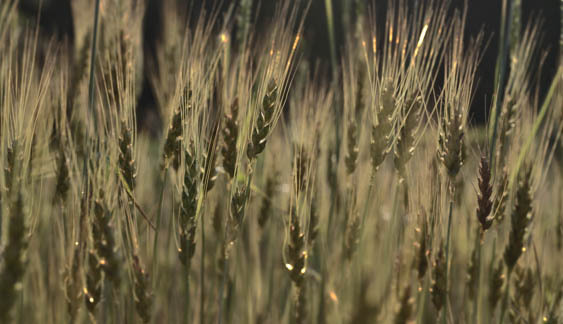
This fall, Anson Mills is all about wheat.
Within the past couple of years we have expanded our research program to include Red Fife, a premier bread wheat of the 19th century, brought into Canada and the United States from the Ukraine. Like many extraordinary heirlooms, Red Fife became extinct, and was returned to life with determination and tenacity by Canadian growers within the past decade. Slow Food International later put Red Fife on its endangered list. Anson Mills, which began growing Red Fife in 2005, means to keep this extraordinary heirloom thriving—particularly as it has generated a zealous following of artisan bakers. We offer Rustic Red Fife Bread Flour to retail customers for the first time—along with a recipe for this bread.
We are also thrilled to offer Colonial Style Fine Cloth-Bolted Pastry Flour, an exact reproduction of the esteemed pastry flour of the colonial South. Gently milled and hand-screened as it was 200 years ago—through fine silk bolting cloths—this product is unlike any pastry flour on the market today. It’s so fine and cool to the touch that it feels like cream. It is the flour we’ve been dreaming of since we began working with Anson Mills products.
How is Anson Mills pastry flour different? Red May, a foundation wheat from which other wheats were bred, is by modern standards a soft, or pastry, flour to begin with, and one that understands crisping better than any other we know. To make pastry flour we cold-mill this wheat very gently, a process by which the outer bran layer is cut and the interior germ and white starchy endosperm explode, dispersing the germ throughout. The bran is then screened off by hand, a step that further enhances the flour’s crisping characteristics.
Commercial pastry flours by contrast go through the wringer—literally. Modern roller mills scalp first the bran and then the germ from the interior white part of the kernel, then pass the white, starchy endosperm through a series of closer and closer rollers to achieve a uniformly fine texture. Finally, in most cases, comes the bleaching, which make the flour blazing white. The entire process is so aggressive that by the time the flour is finished, it is 100 percent starch and must be fortified with vitamins in order to even qualify as food.
This is a process contrary to everything we believe in.
Here’s another difference between us and the other guys: typically, pastry flour is so soft its uses are limited to biscuits and pie doughs. Not so with Anson Mills pastry flour, which is strong enough to produce a laminated dough yet soft enough to make dumplings.
You will love the results.
We have big plans for this versatile pastry flour—and there is no telling where it will take us. Stay tuned.
Oh, wait, almost forgot! We’ve got peas, fabulous old lowcountry peas! These Sea Island Red Peas come straight off the back burner—that would be the very, very back burner. On rice plantations throughout the Antebellum South they were served as savory gravy companion to Carolina Gold rice grits from morning to night—and called, appropriately, “reesy peezy” (Gullah for rice and peas). African in origin and tiny in size, Sea Island Red Peas were brought to this country by slaves and became a vital player in sustainable rice farming rotation for soil improvement before their production was abandoned along with rice during the depression. Ten years ago, driving through South Carolina’s ACE Basin, Glenn Roberts discovered small collections of feral peas as well cultivated peas in kitchen gardens of families descended from slaves. He was able to return this very valuable companion crop to lowcountry cultivation and currently farms close to 100 acres of red peas in rice rotations. Last November, Sea Island Red Peas and Carolina Gold Rice were inducted into the Slow Food Ark of Taste.
Carolina Gold Rice, in any form, can be cooked beside the Slow-Cooked Sea Island Red Peas, and reezy peezy is served as simple rice with gravy ladled over it. Authentic ingredients for making Sea Island Red Peas include smoked pork neck, wild or cultivated alliums, wild mushrooms, and spices that run the spectrum from simple dried red pepper and wild laurel to a fresh toasted variant of curry, plus sea salt. These are remarkable foods that inscribe comfort and lasting palate impressions on anyone fortunate enough to taste them.
Summer at Anson Mills
August 2008

Now that the Gourdseed corn is laid by and the gold rice we planted is ripening in the fields, hot August afternoons find us dozing under a ceiling fan on the porch of our Carolina beach house, traveling backwards in time to discover historic foods of the Old and New Worlds—foods that will play well together on a table spangled with late afternoon light.
We might sail from old Spain with conquistadors bound for the Americas to track the odyssey of Spanish flatbread traditions and a white wheat, called Sonora, into central Mexico and then on to California. We gather Sonora seeds from a California field and plant them in South Carolina, along with an American heirloom bread wheat called Red Fife. We mill, then blend the two wheats to send their flavors soaring and enhance their baking properties. This new flour, which we call Trigo Fuerte Flatbread Flour, makes ethereal scratch wheat tortillas and quesadillas.
In a 15th century Native American coastal community, we find hominy corn and masa. We eat native corn flatbread that cradles just-caught fish and searing, hot green chiles. We follow America’s native cuisine—and the trail of its ingredients—as they wind through a European settlement and arrive, almost intact, into the 21st century. Enroute, in the Appalachian Mountains of the 19th century, we watch the rise and fall of a yellow hominy corn called Henry Moore. Taken by its charms, we grow, harvest, and dry this corn ourselves, then bring it home where we make fresh masa. From this masa we press and griddle up rustic, deep-yellow tortillas that have a flavor that astounds. We chop cabbage, roast tomatillos and chiles, fry fish, and dive into one of the most appealing and enduring foods that we know: fish tacos.
A carriage tour of late 18th-century Southern plantations puts us within striking distance of the ultimate pimento cheese and its time-honored companion, Southern wheat crisps. We taste aged farmhouse cheddars, hoop cheese, farmer’s cheese, potted cheese—and select the finest. We pick sun-ripened sweet peppers from the garden. From Virginia to Alabama, we visit wheat fields and discover Red May, the perfect crisping wheat. We haul these ingredients home and make an unrivaled pimento cheese and crisp, thin wafers from Red May that are regal enough to be its companion. The pimento cheese and crisps—and a bottle of creamy champagne—accompany us on a choppy midday sail along the coast.
Our final journey takes us to the port of Savannah in the 18th century. We bring new crop Red May wheat and harvest ripe Georgia peaches from their orchards on the Sea Islands into our kitchen. For an afternoon gathering three centuries later, we create a Red May Graham streusel-topped peach crisp, timeless and divine, a study in textures and a celebration of Southern flavors. As the crisp bakes, it fills our house with intoxicating aromas, and through the oven window we watch it bubble and brown to perfection: We are witness to the rebirth of classic Southern cuisine the way it was meant to be.
We invite you to join us.








